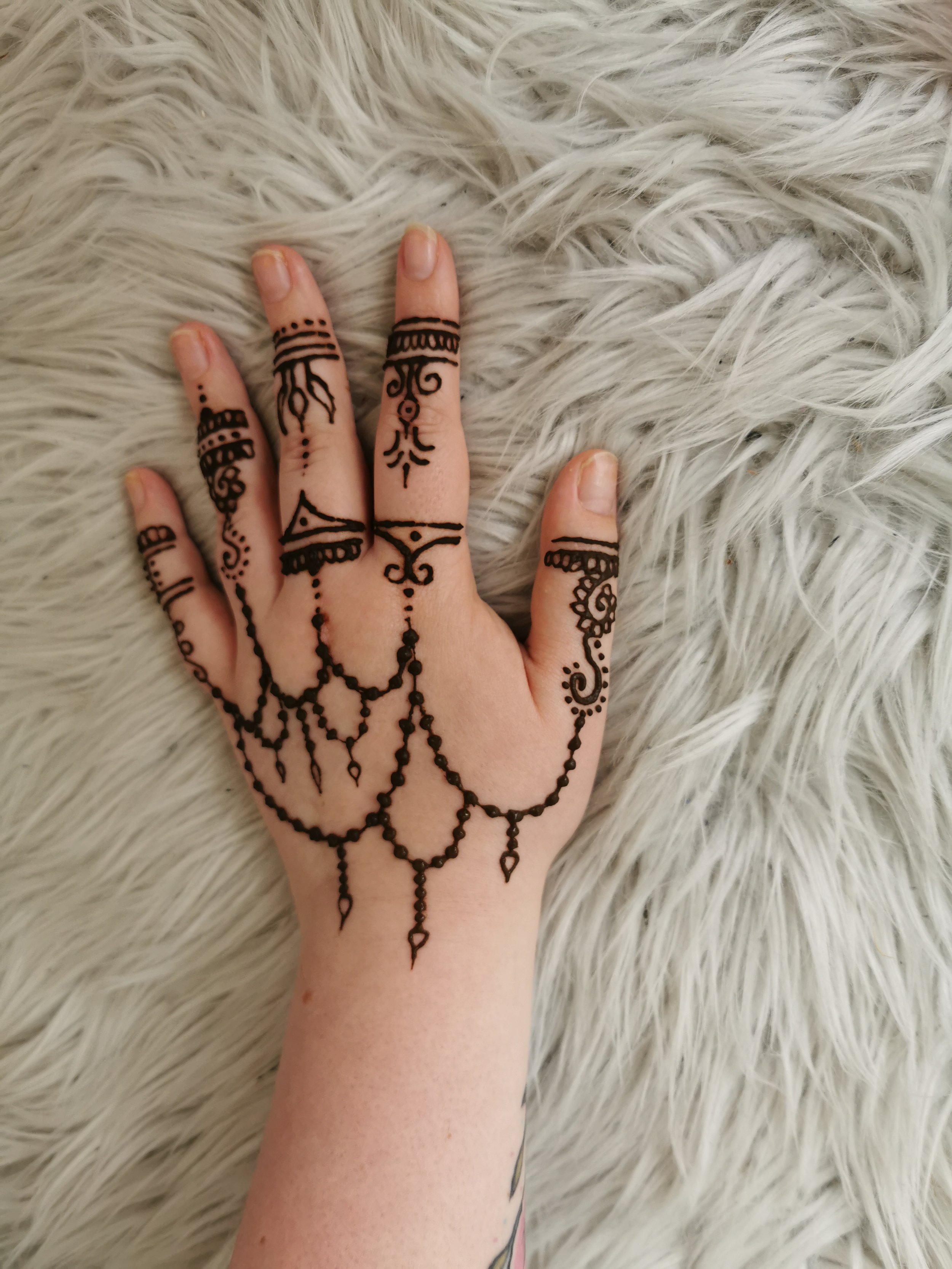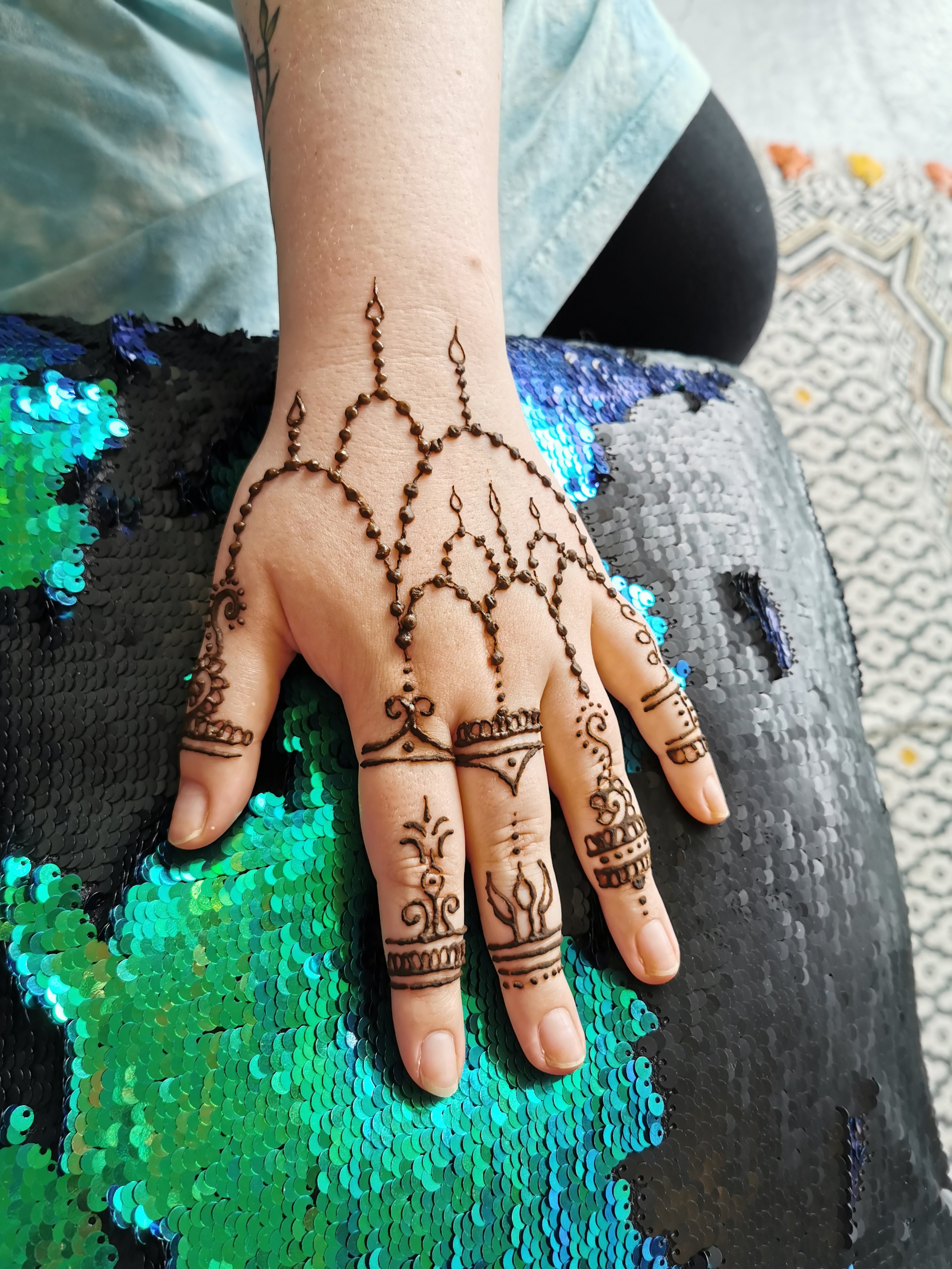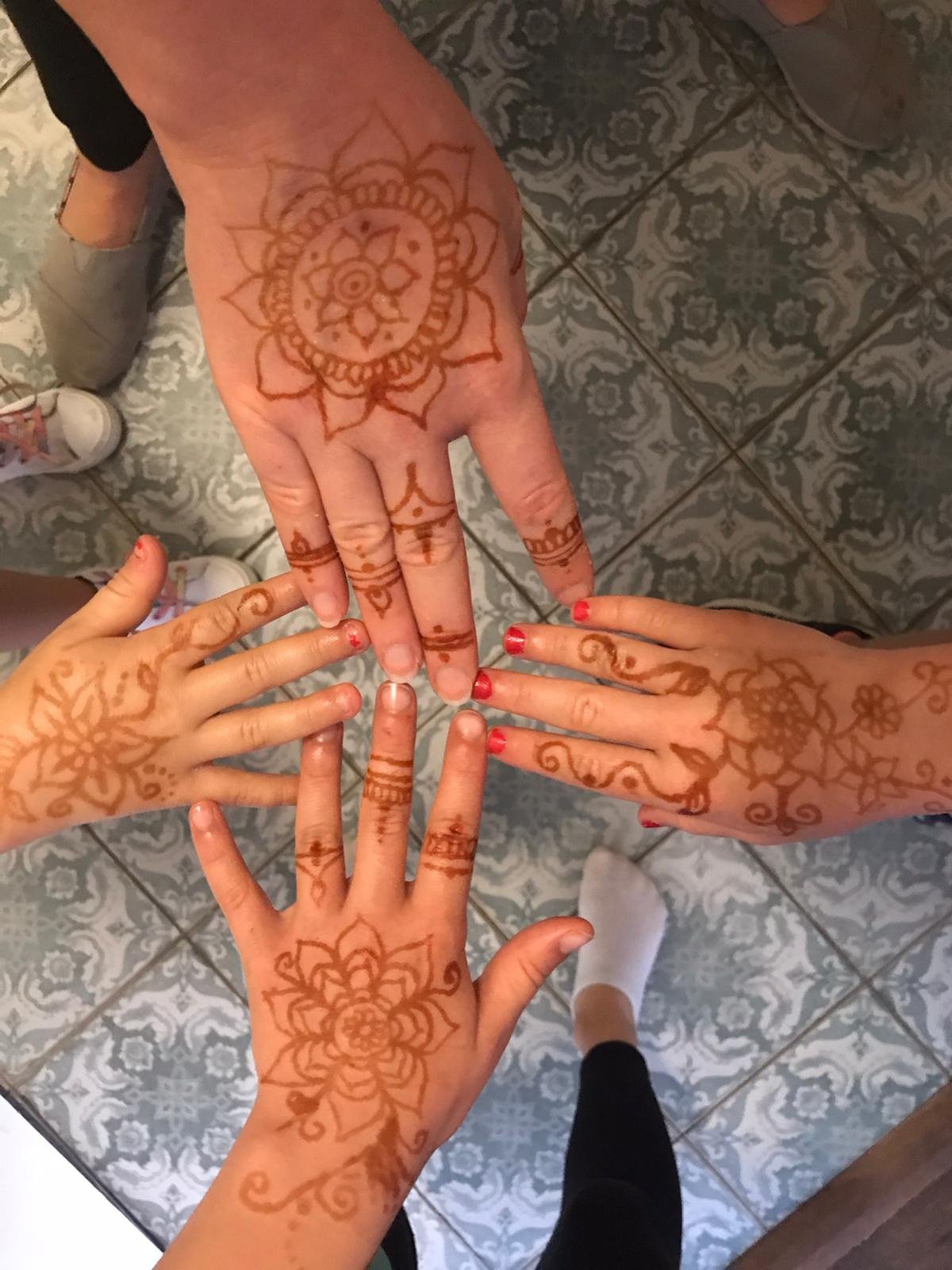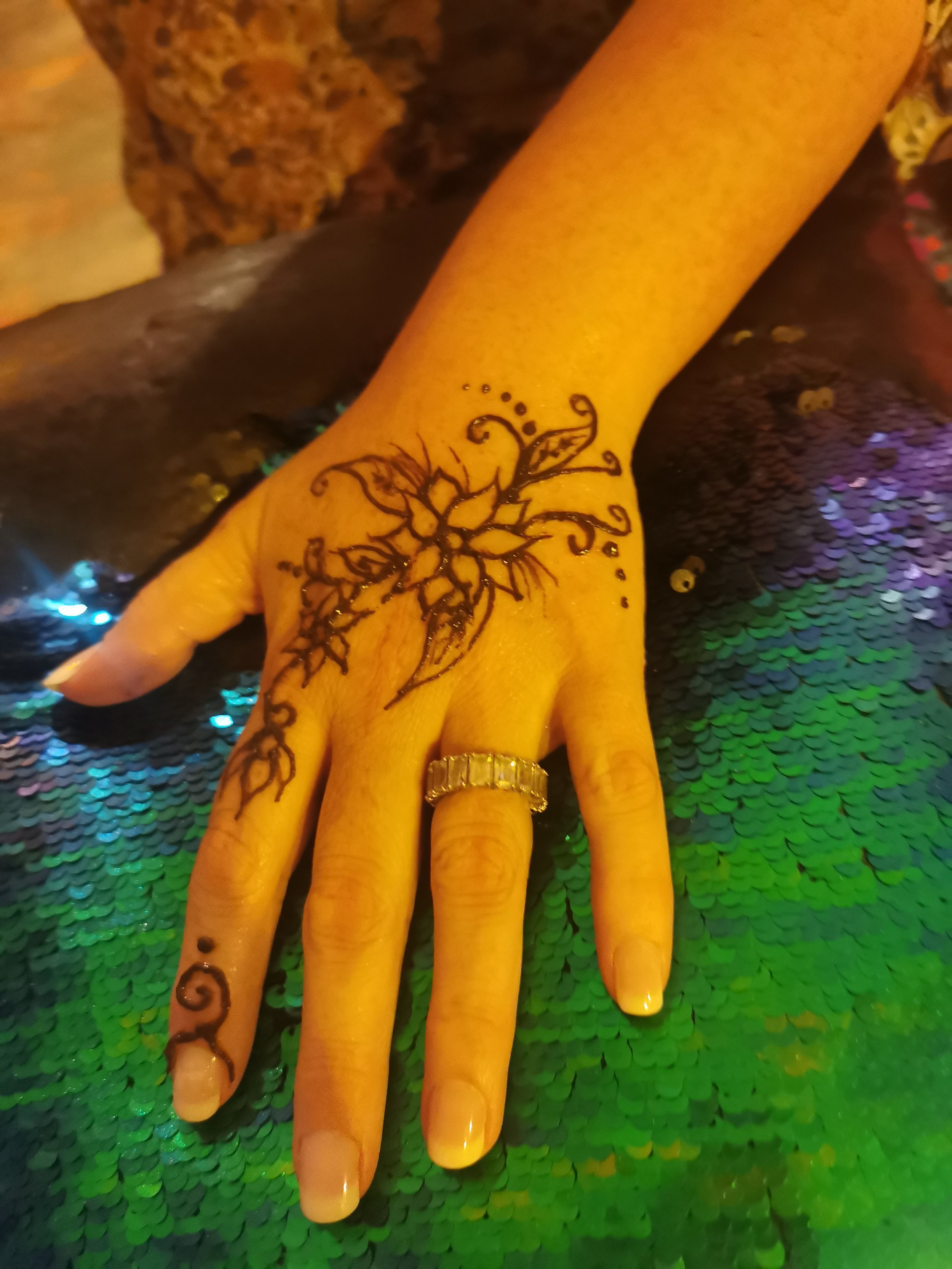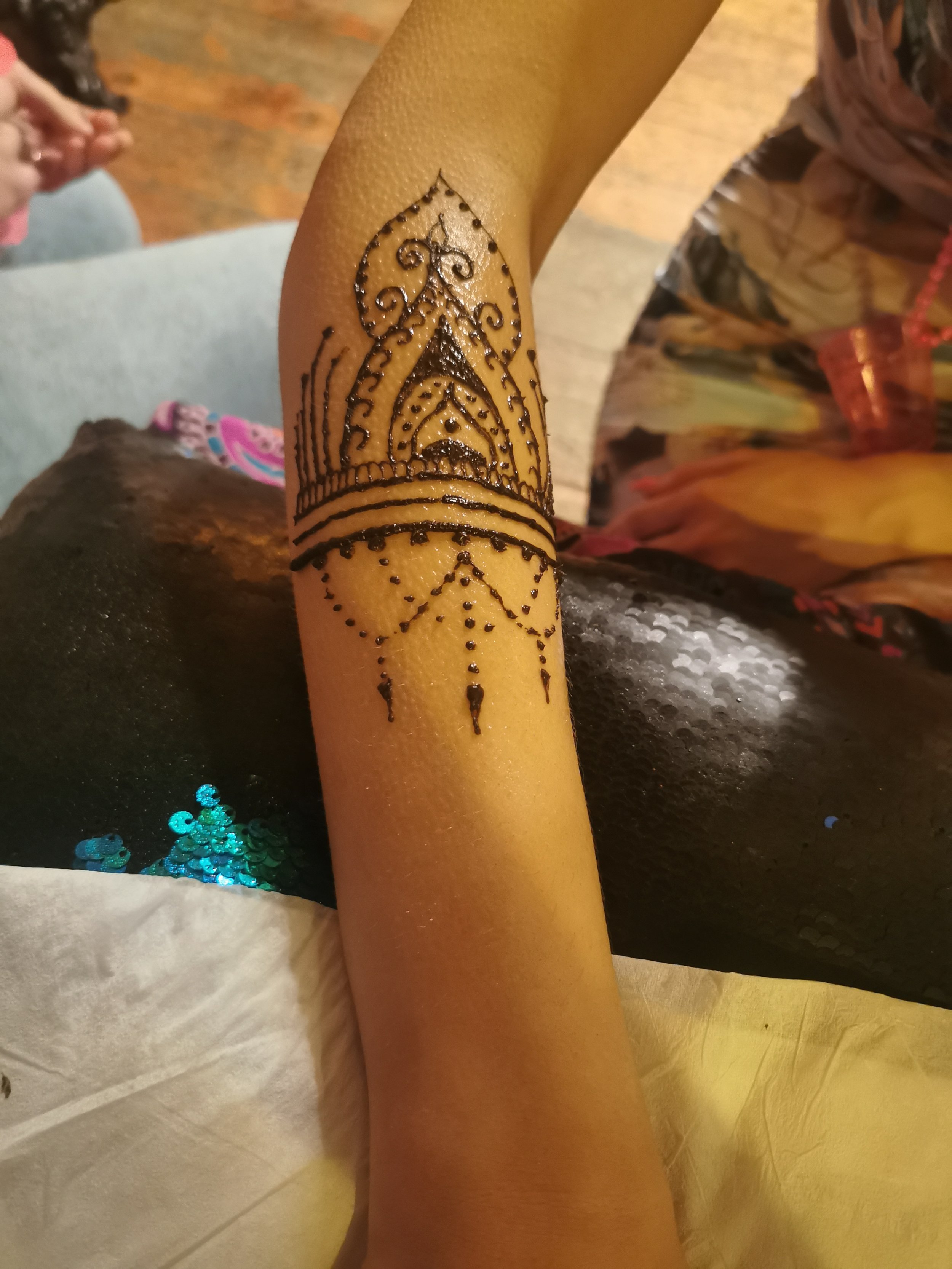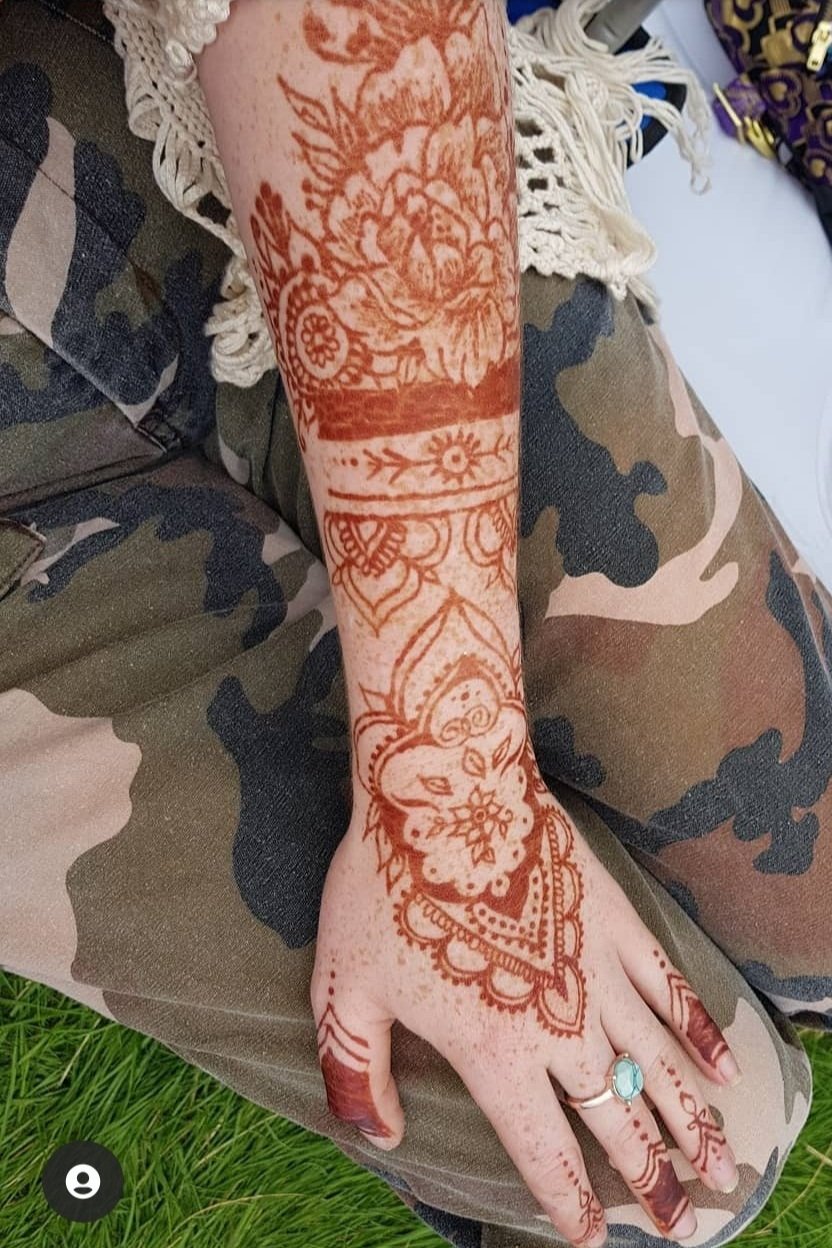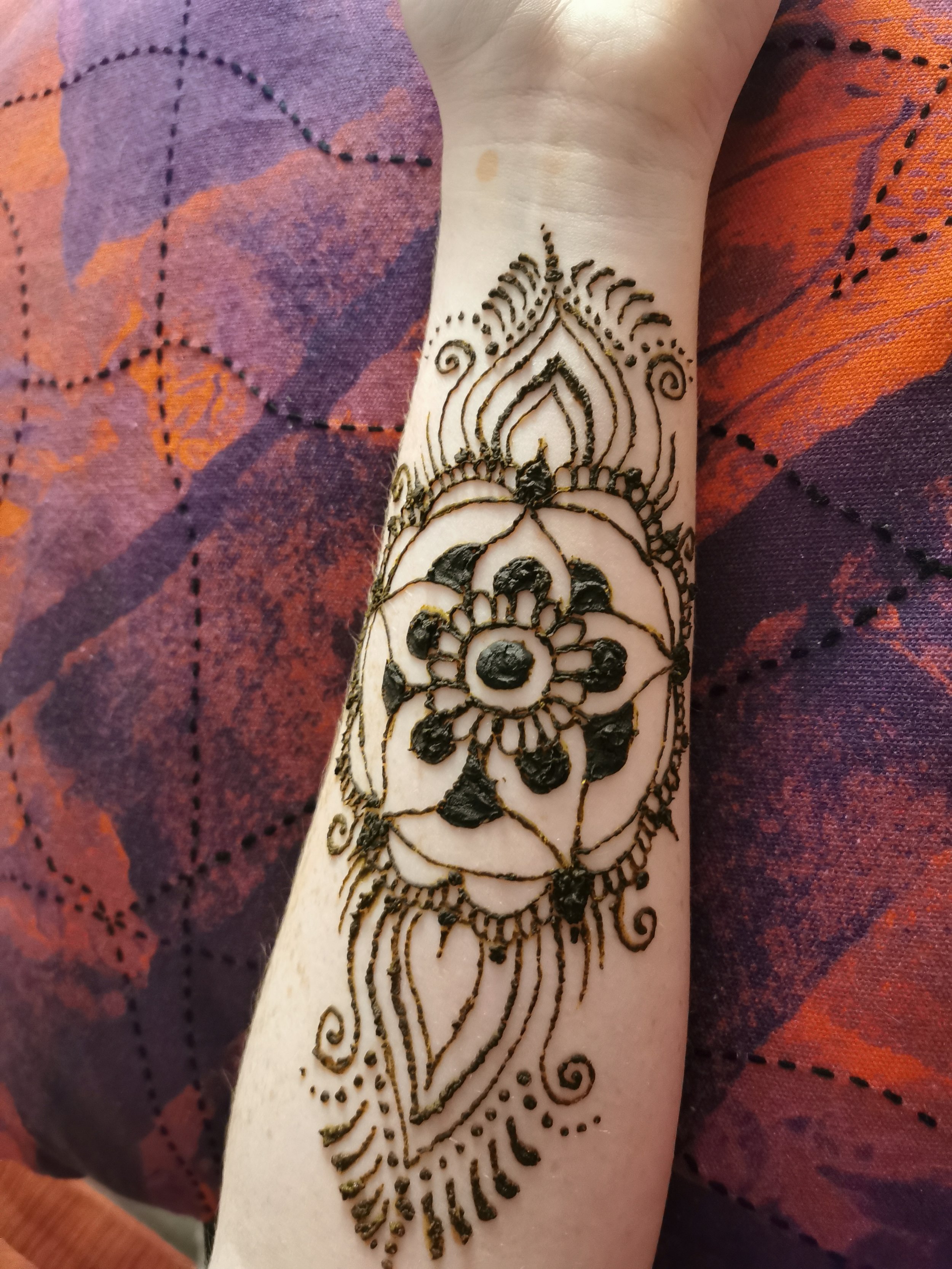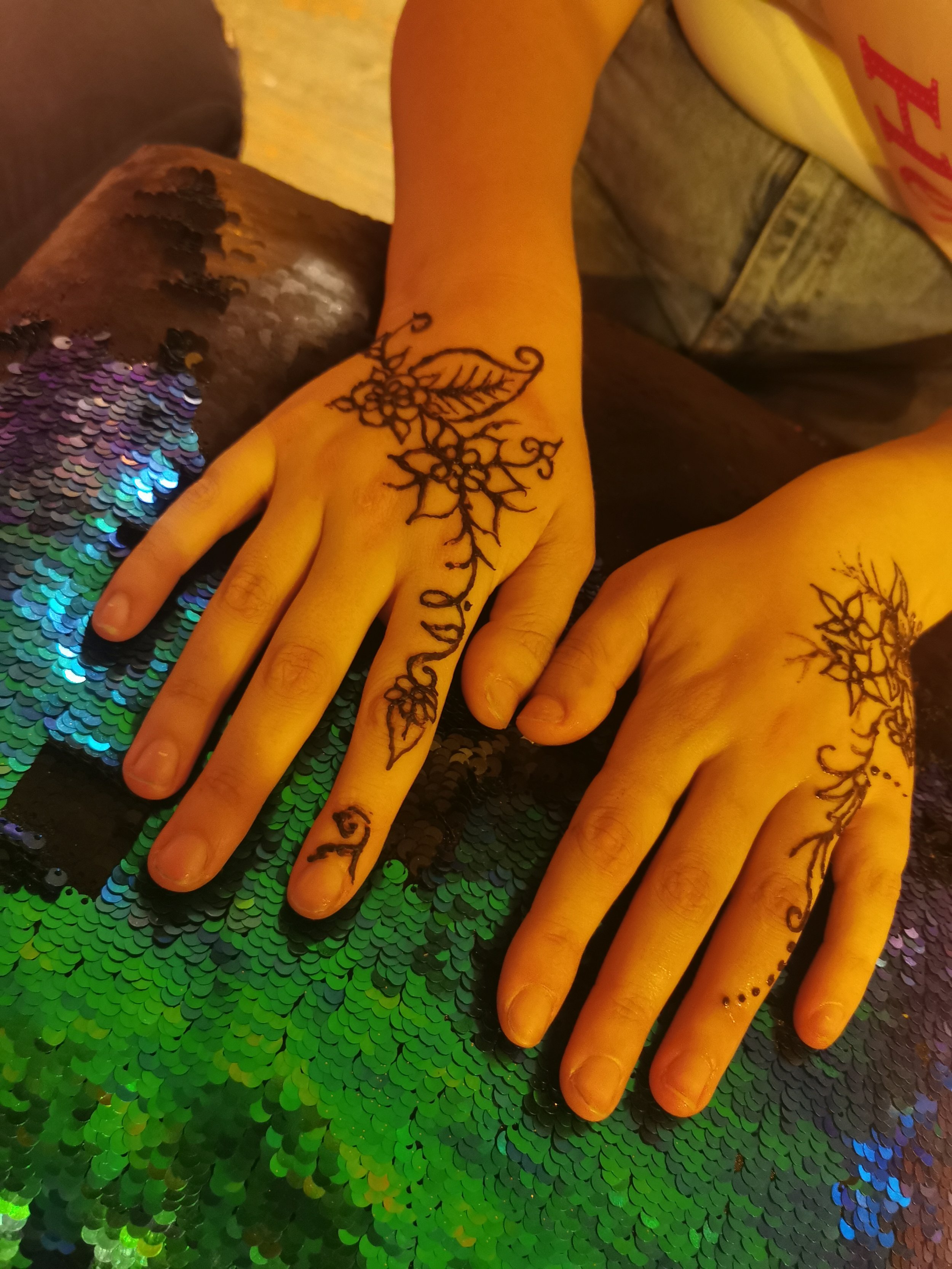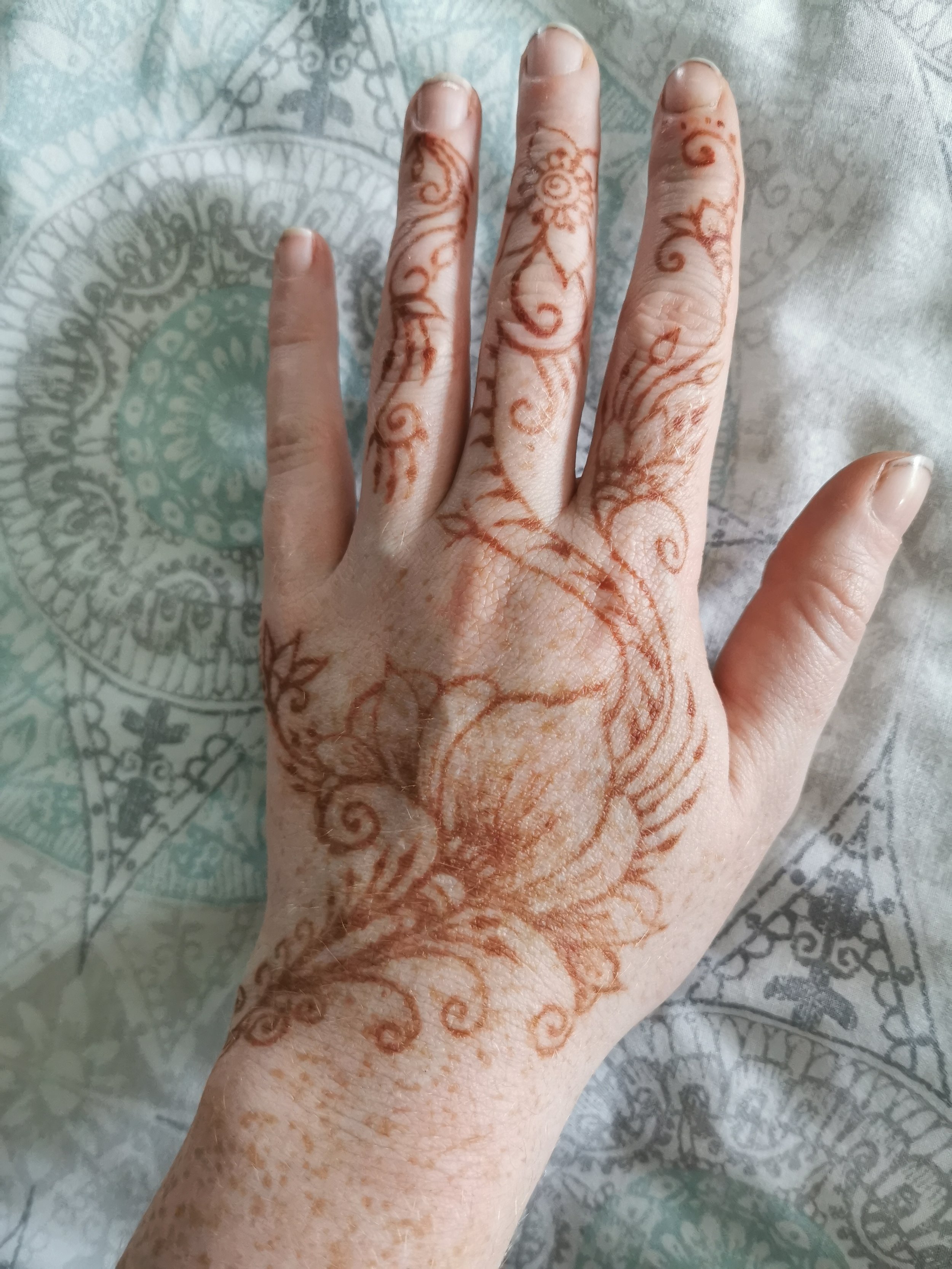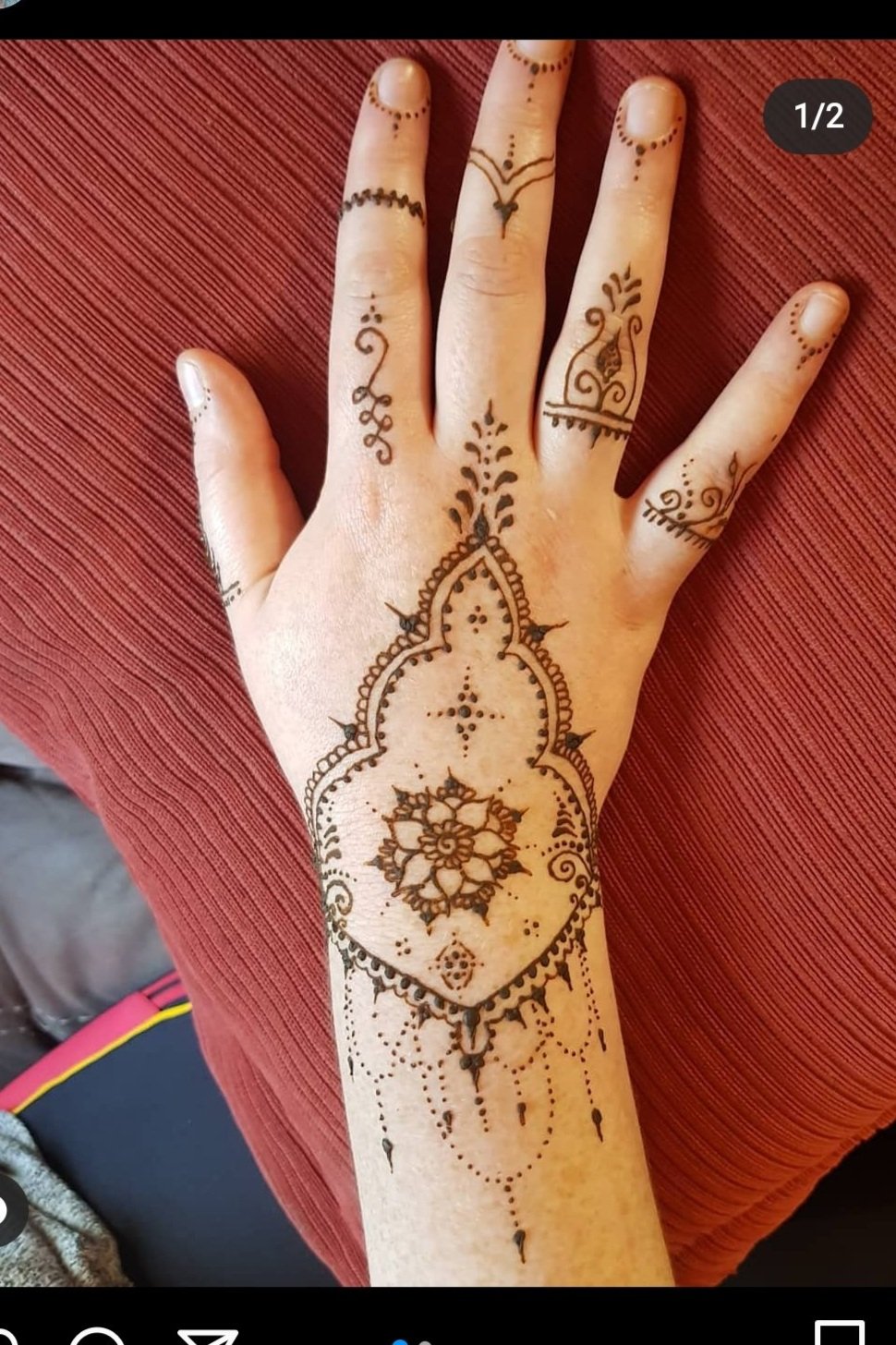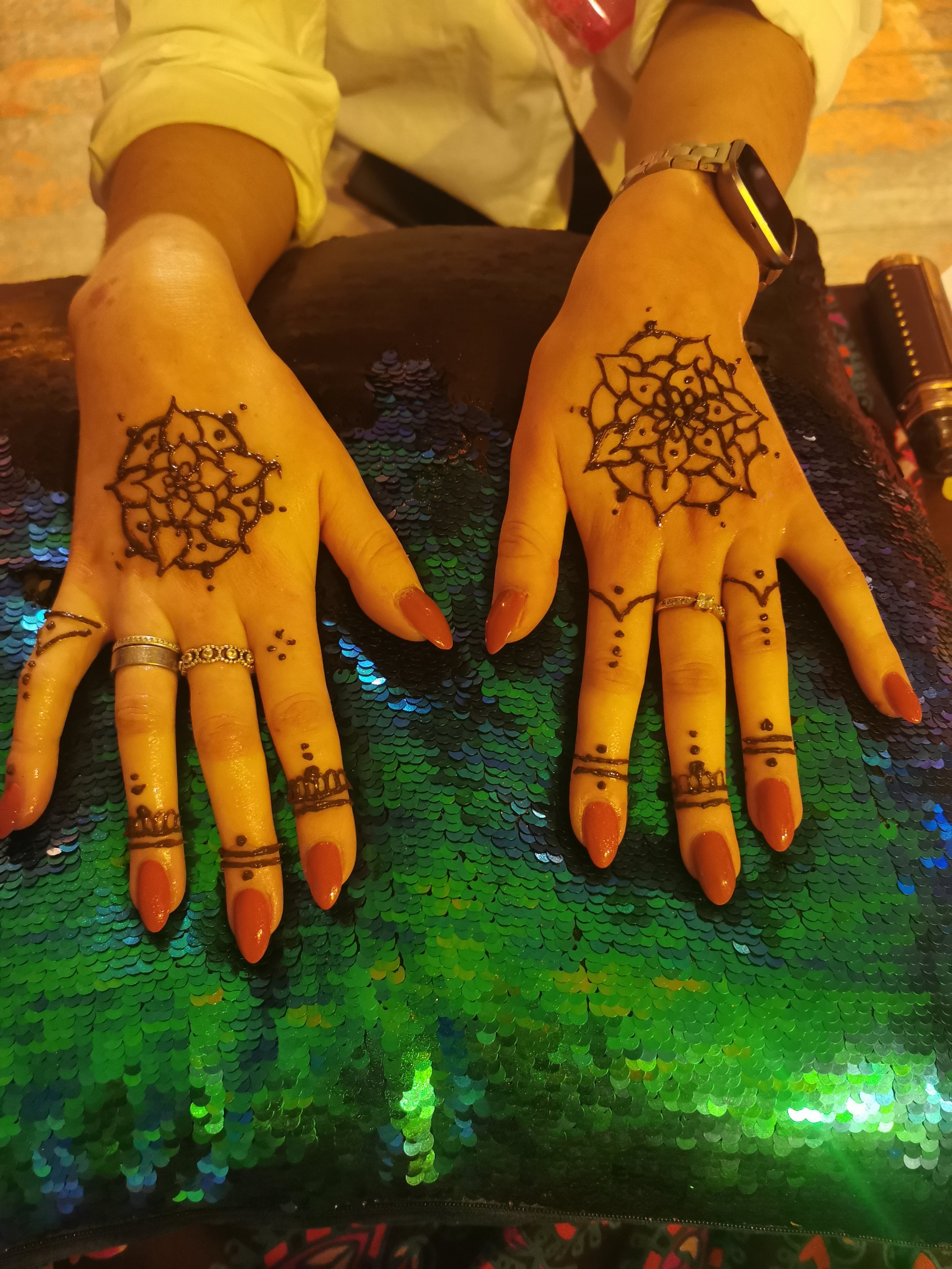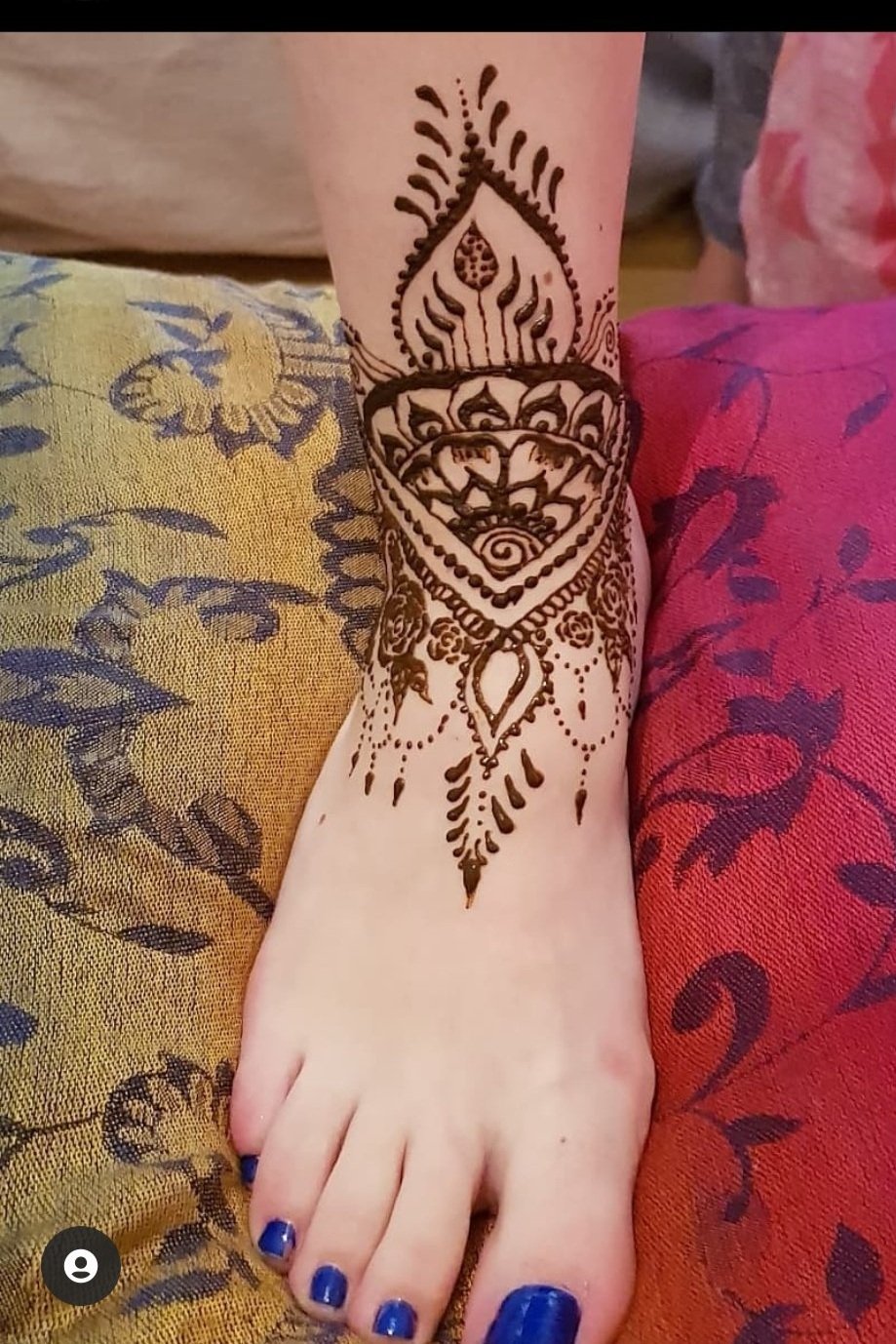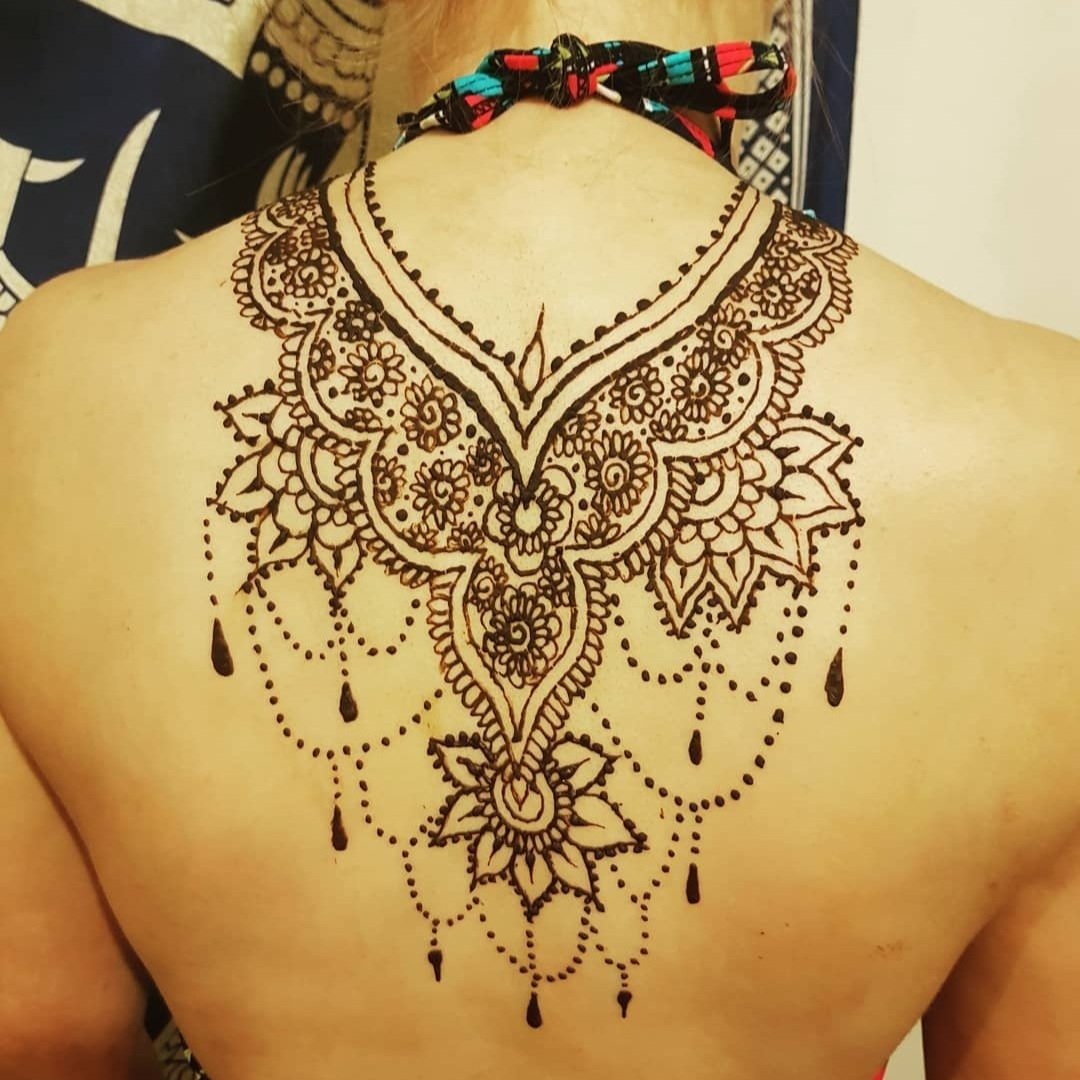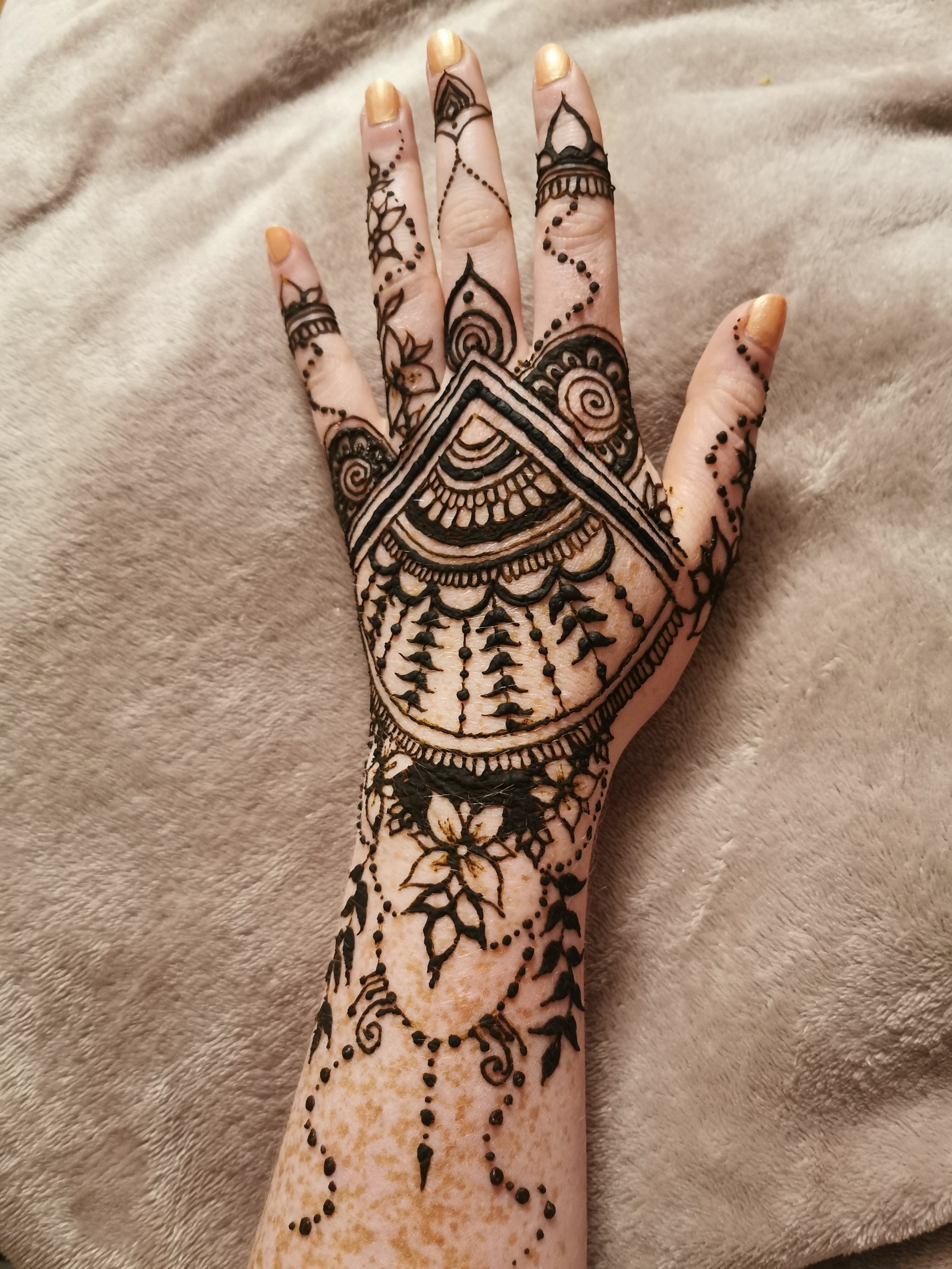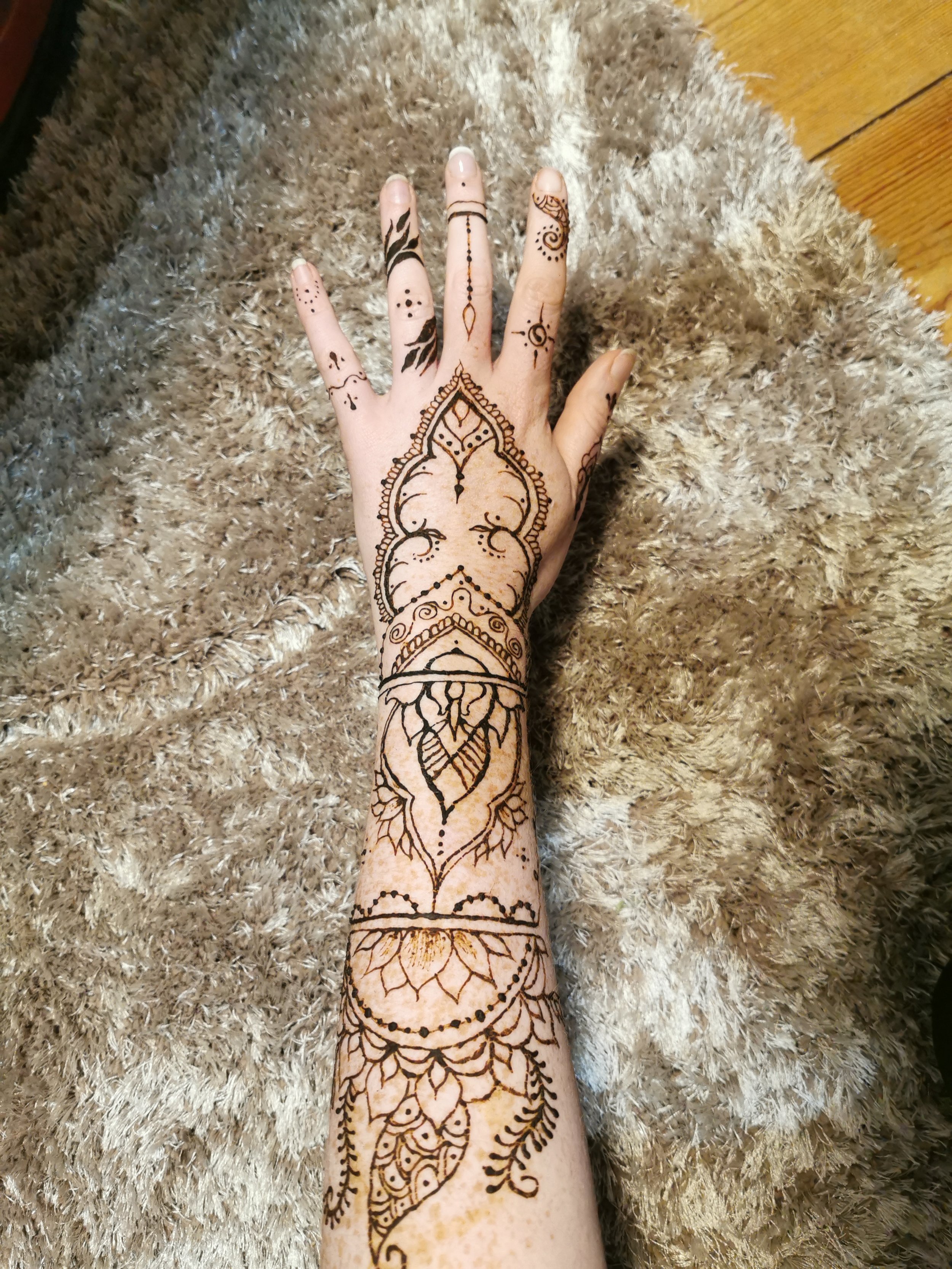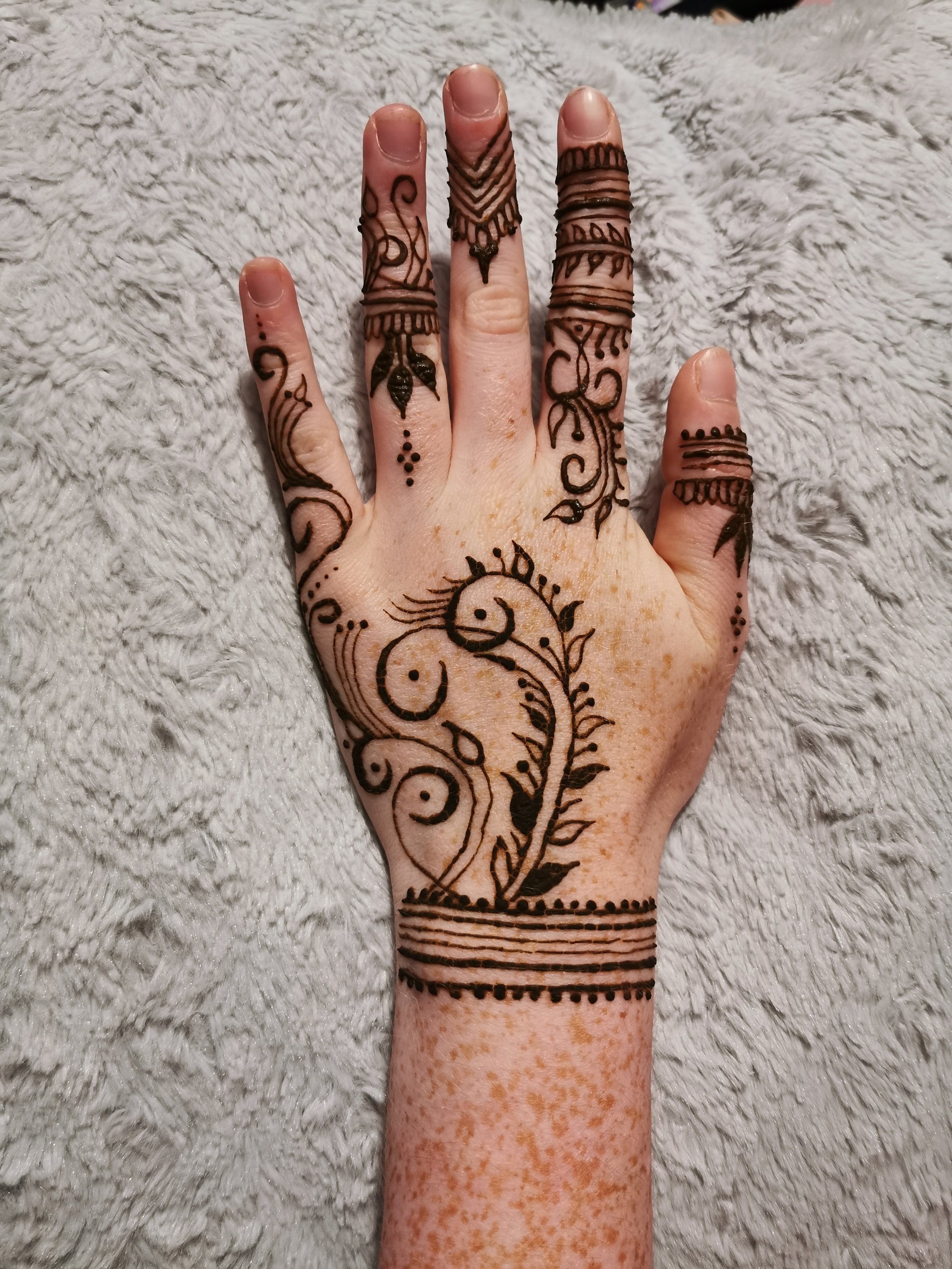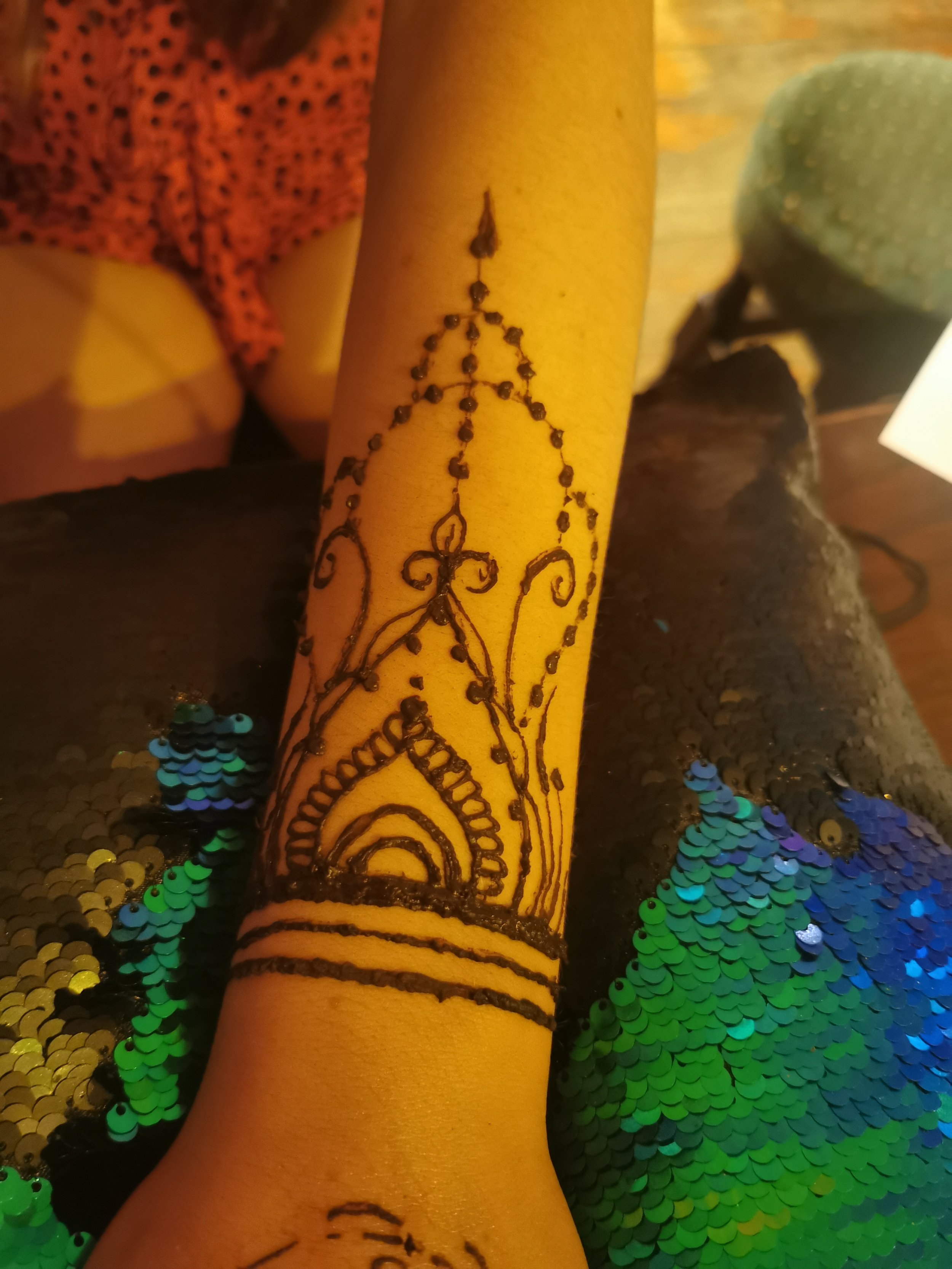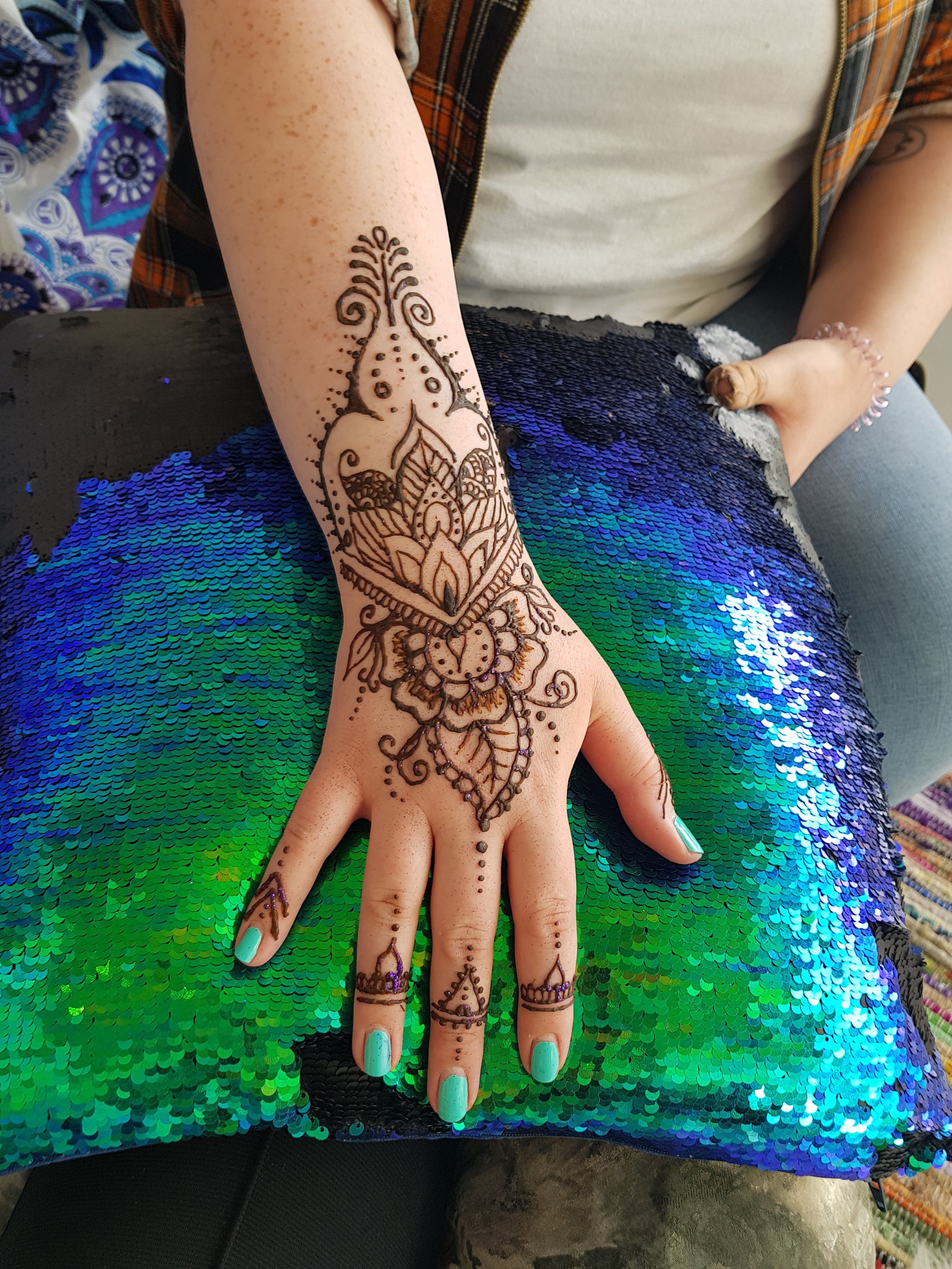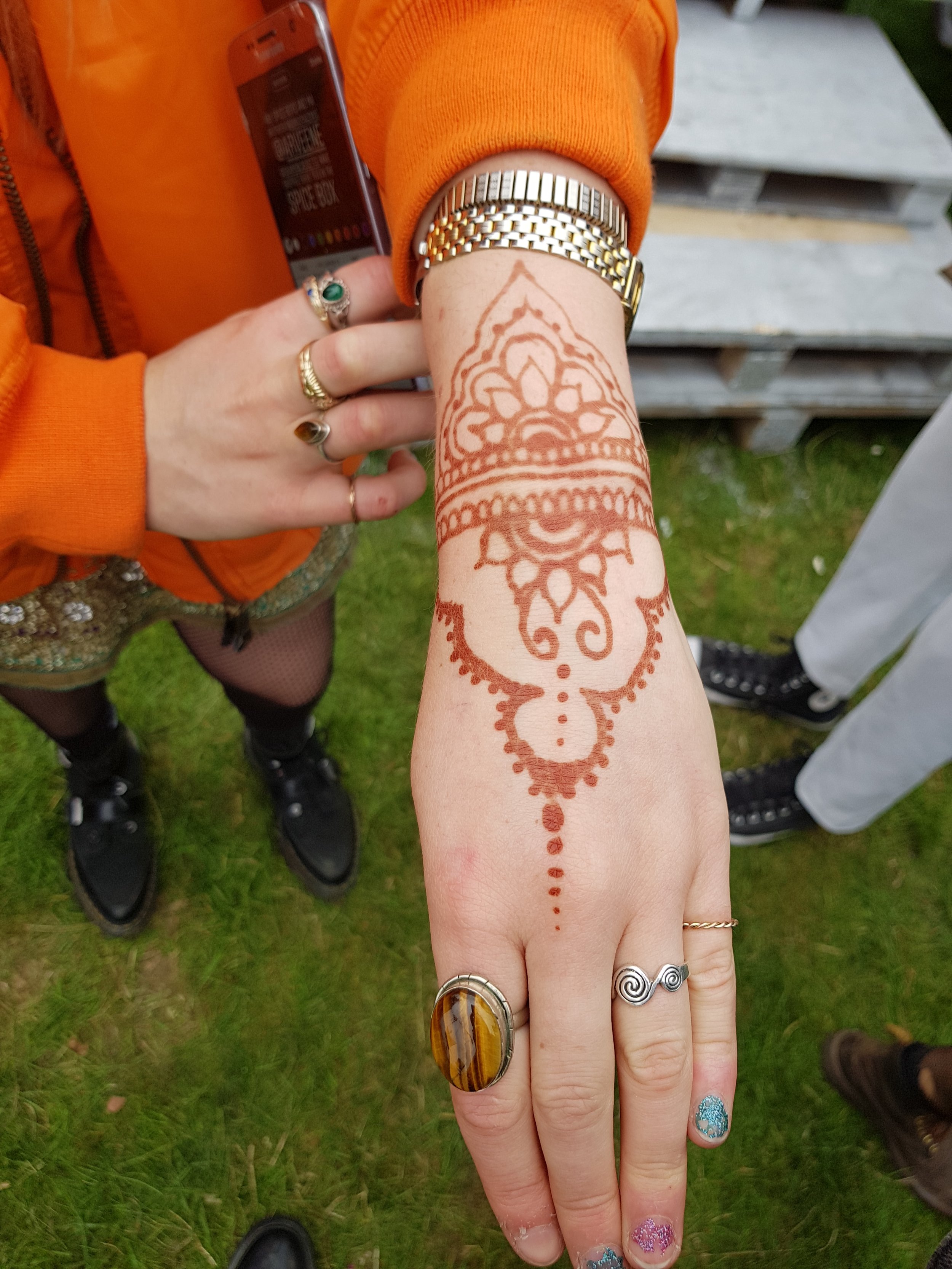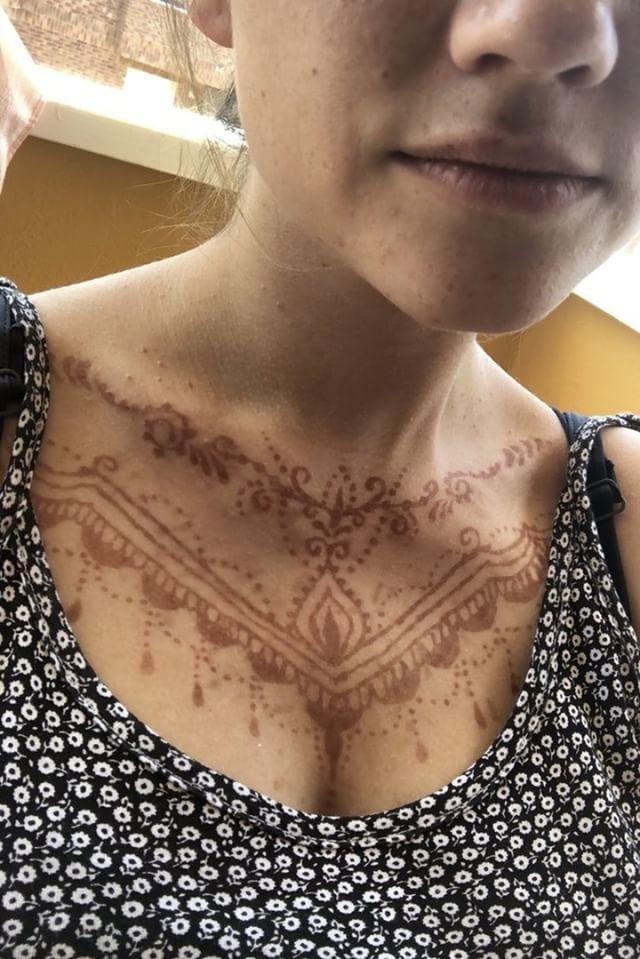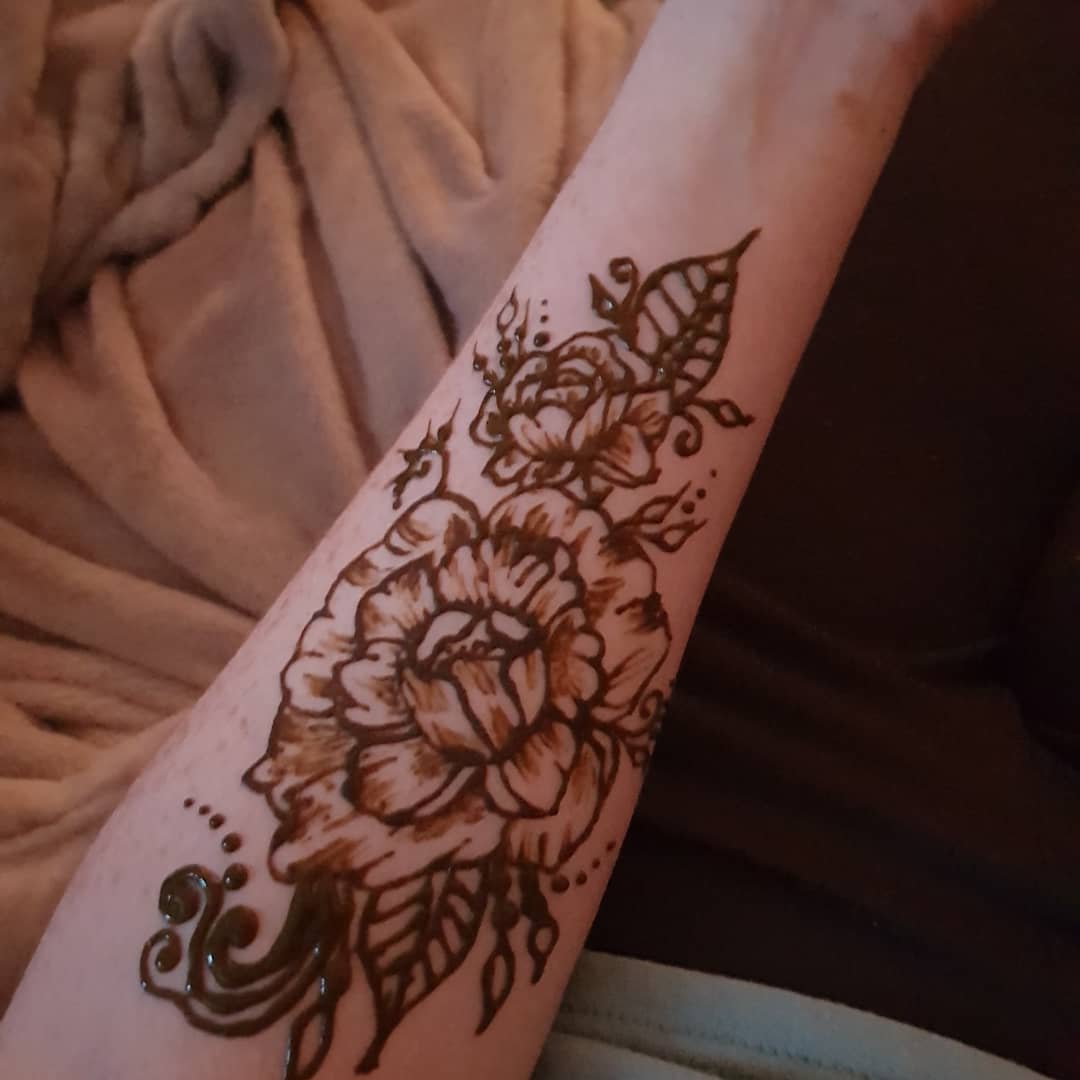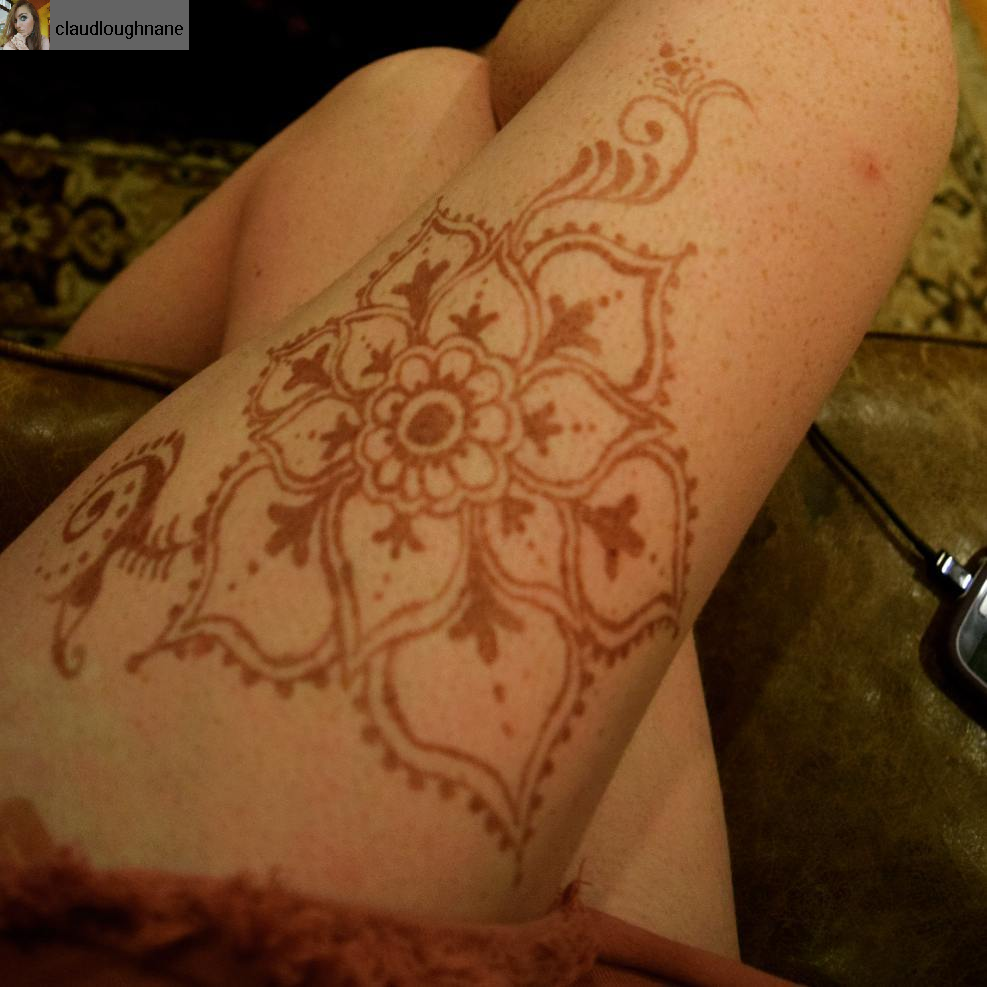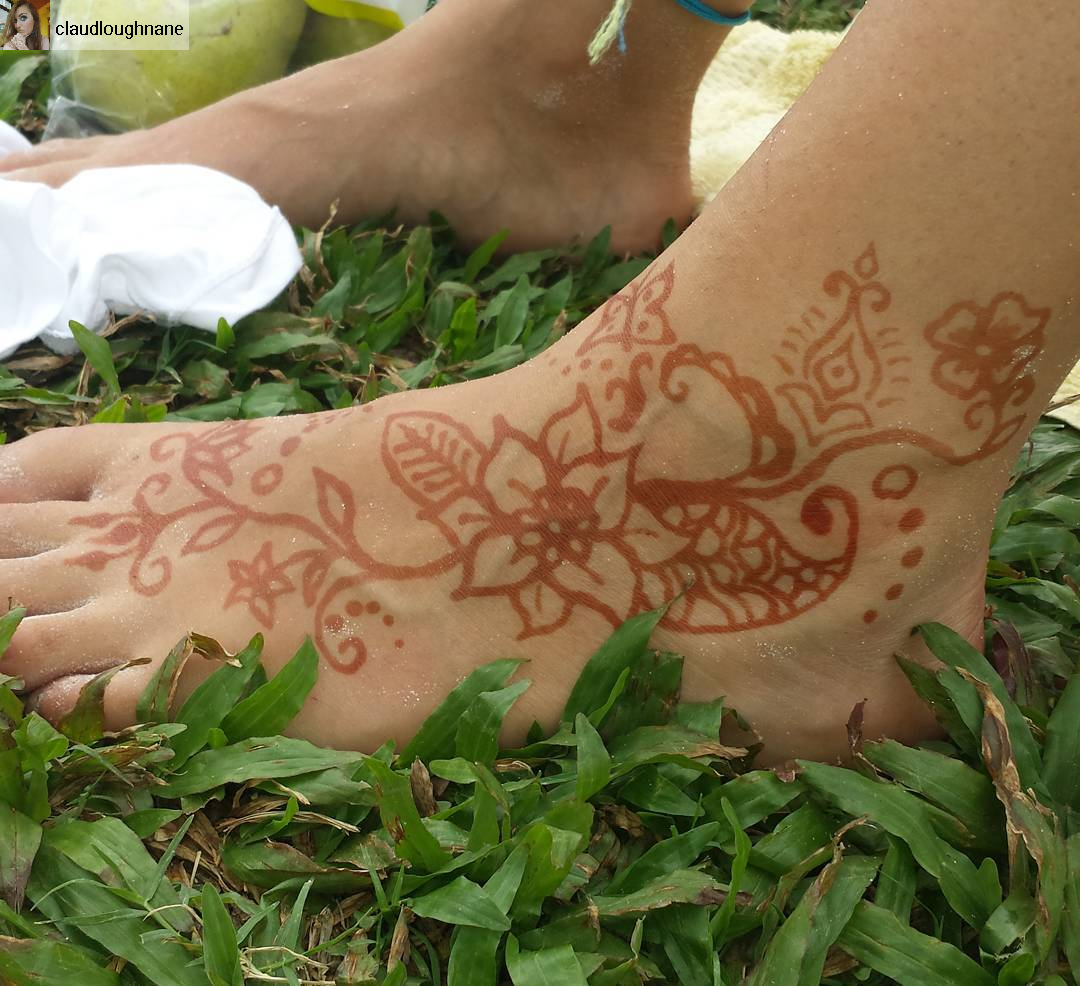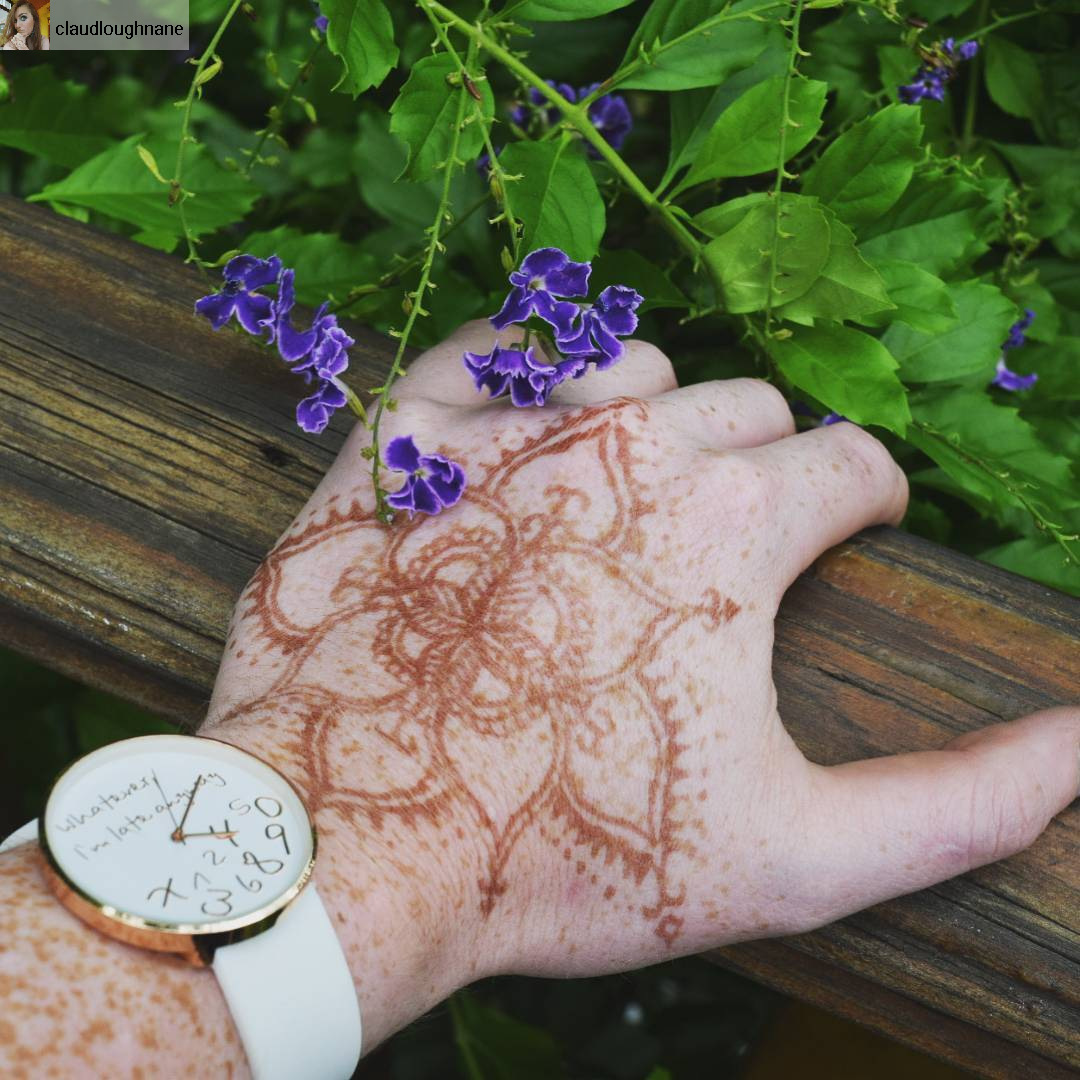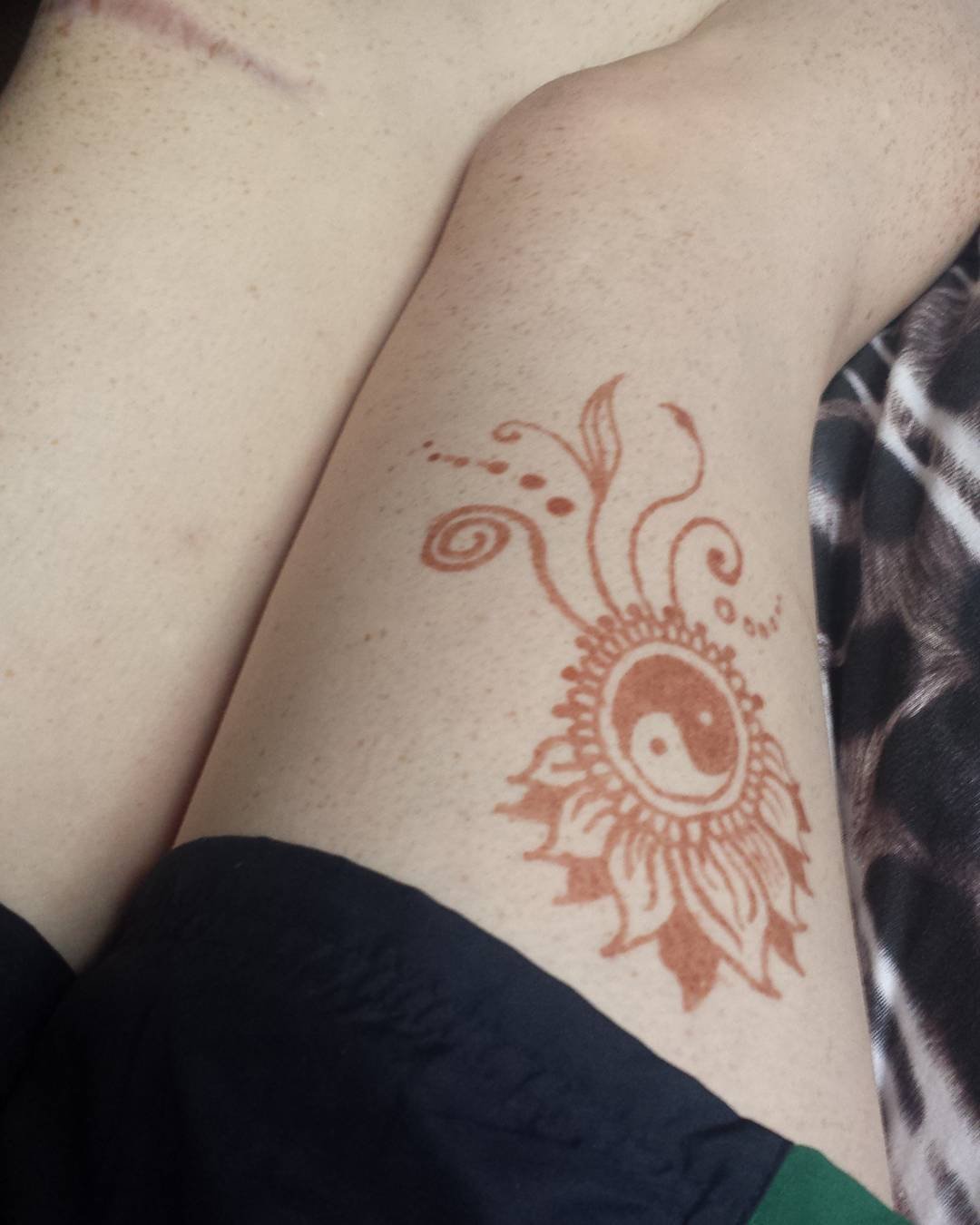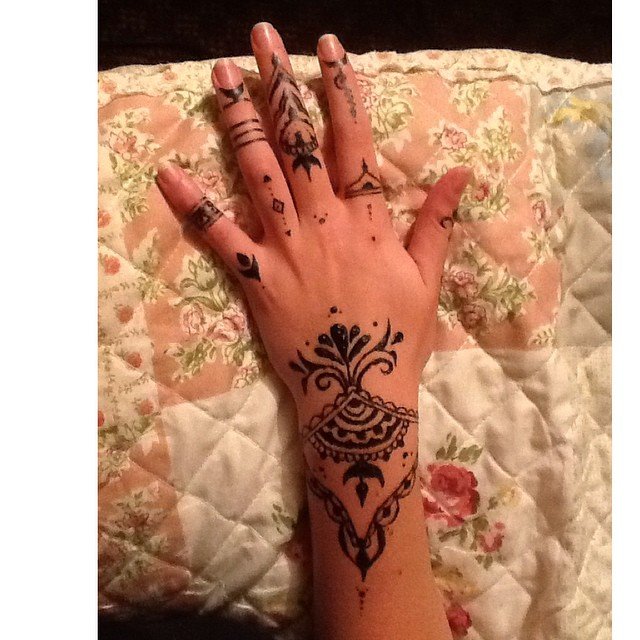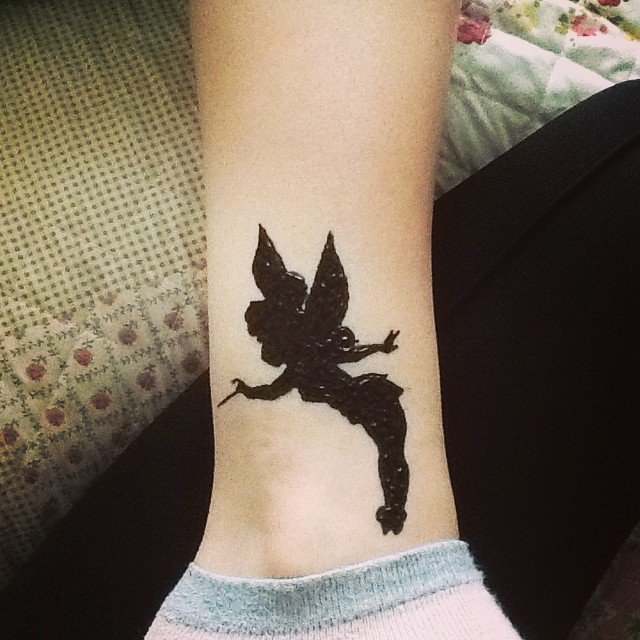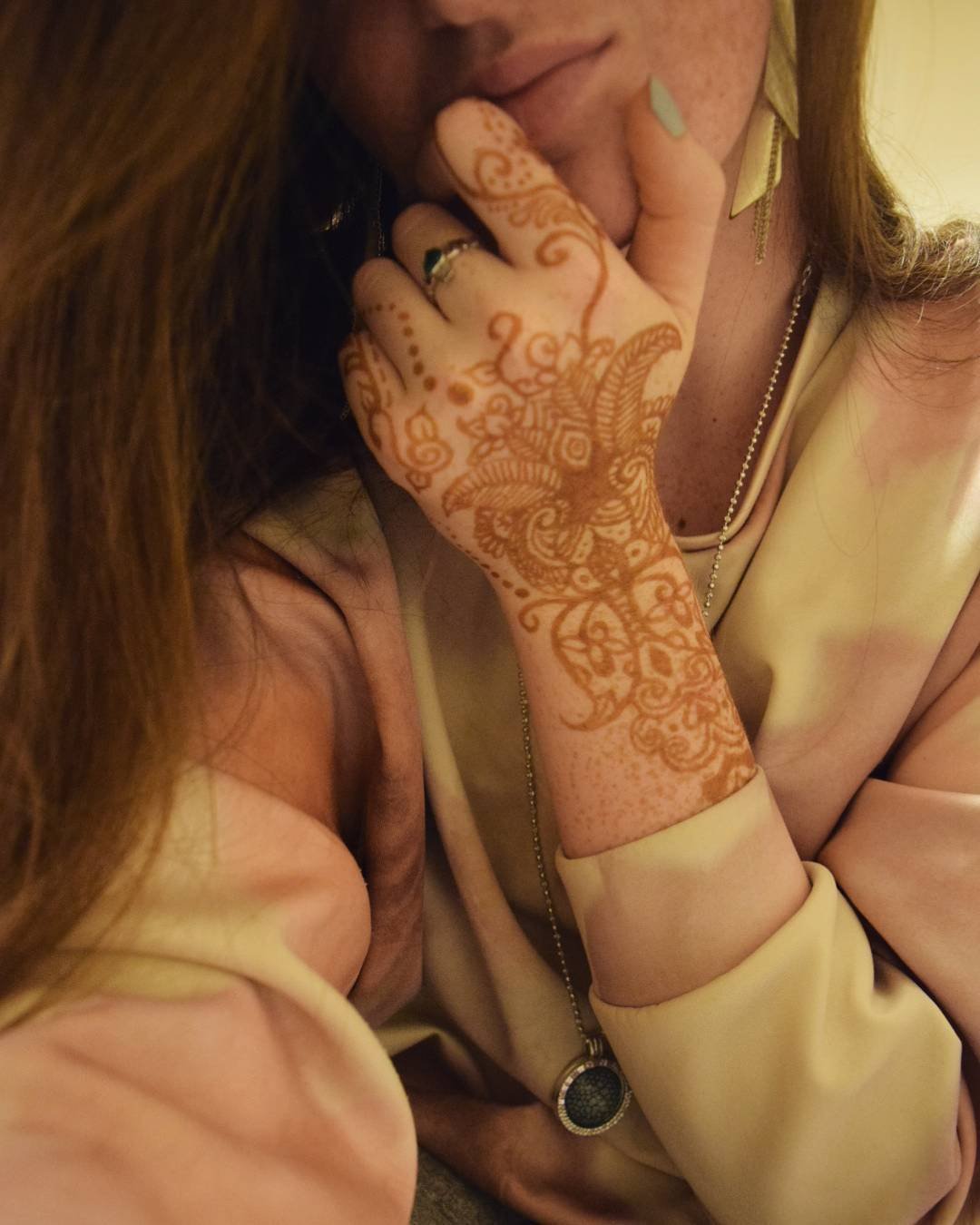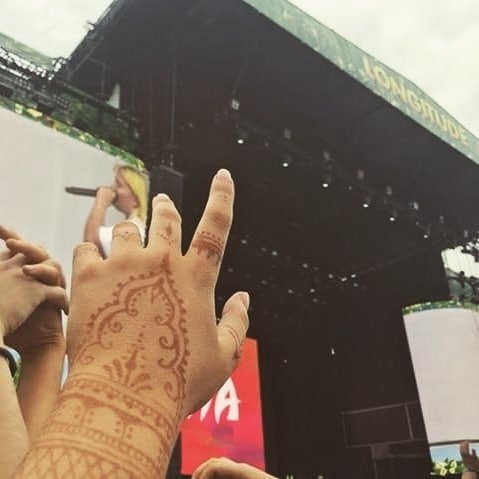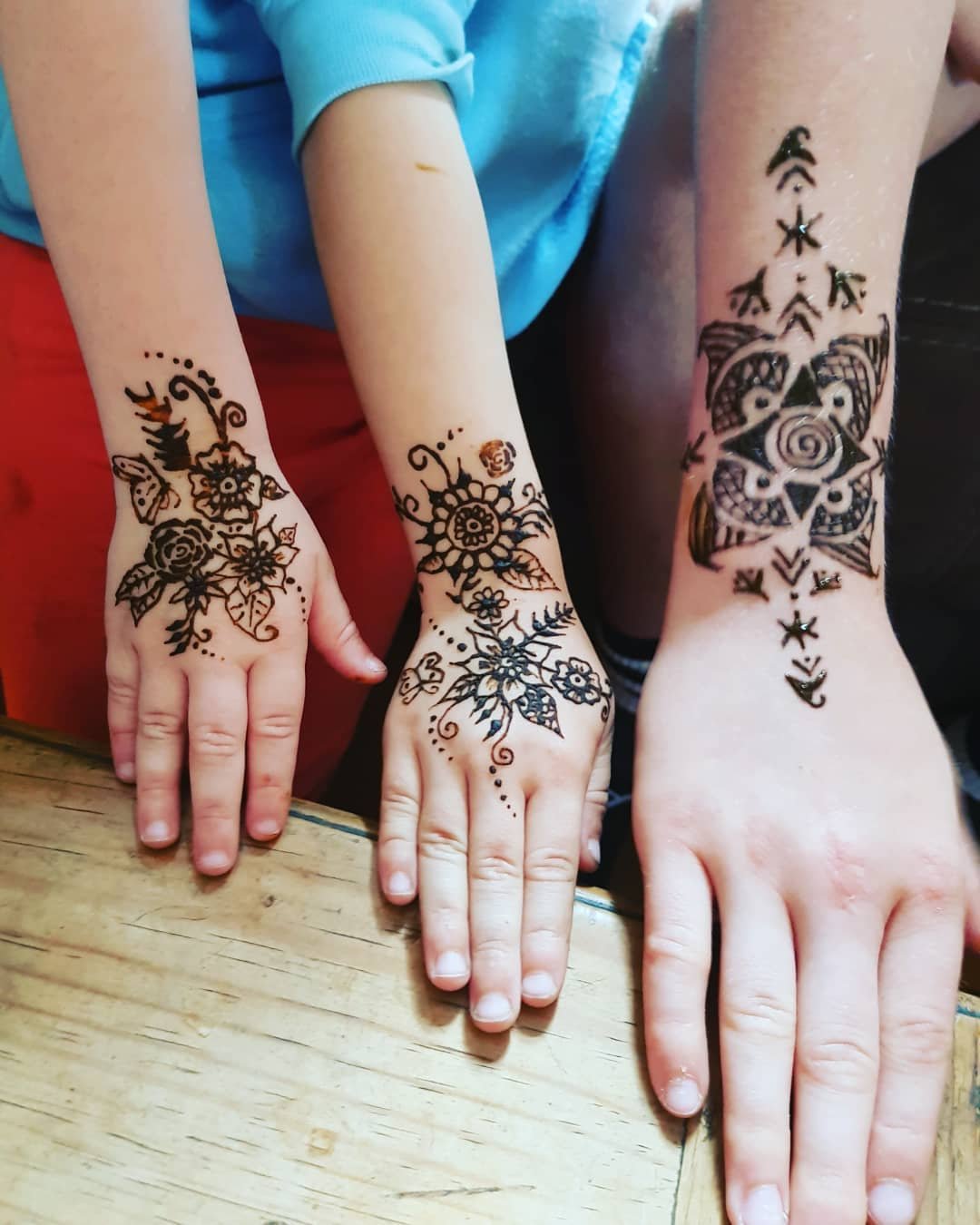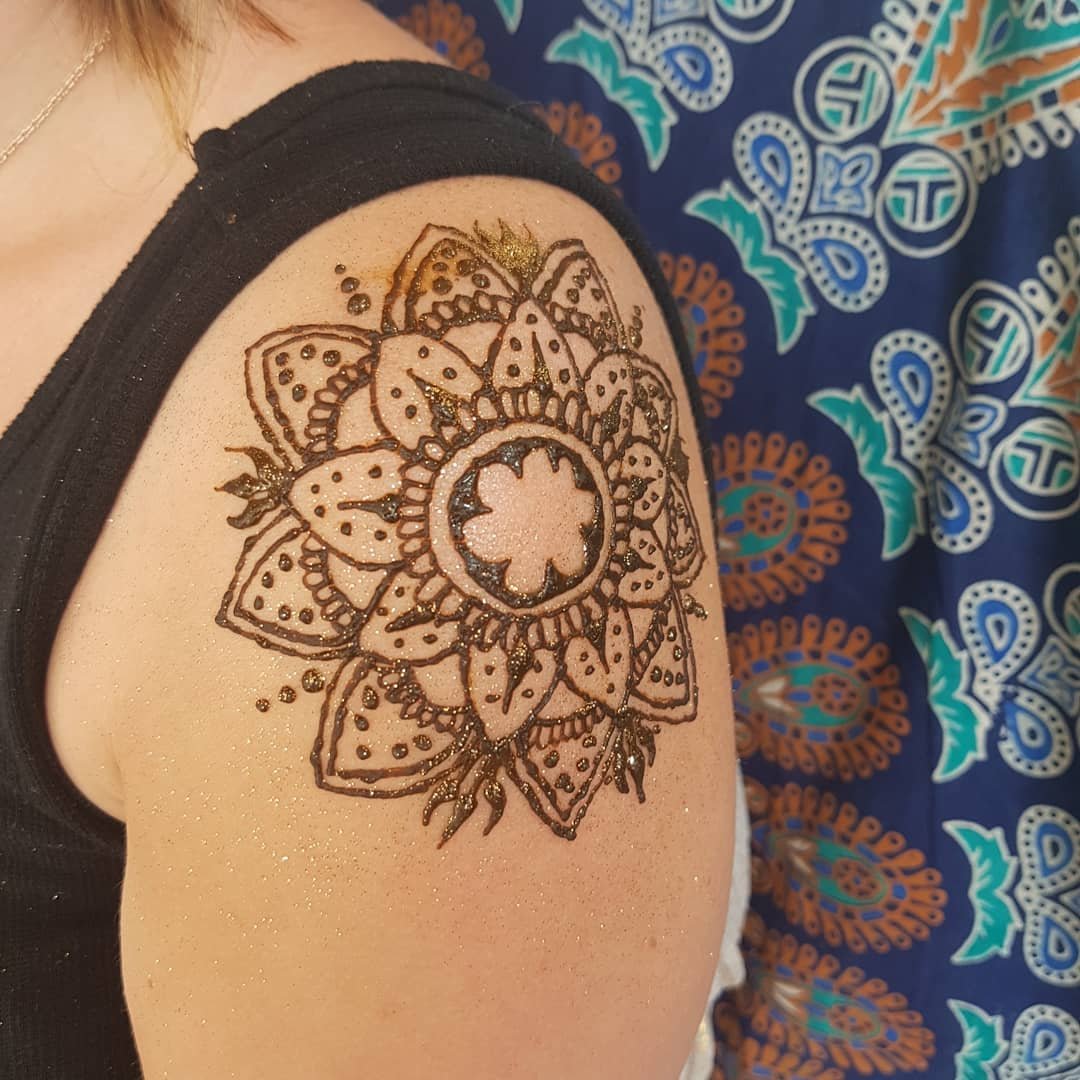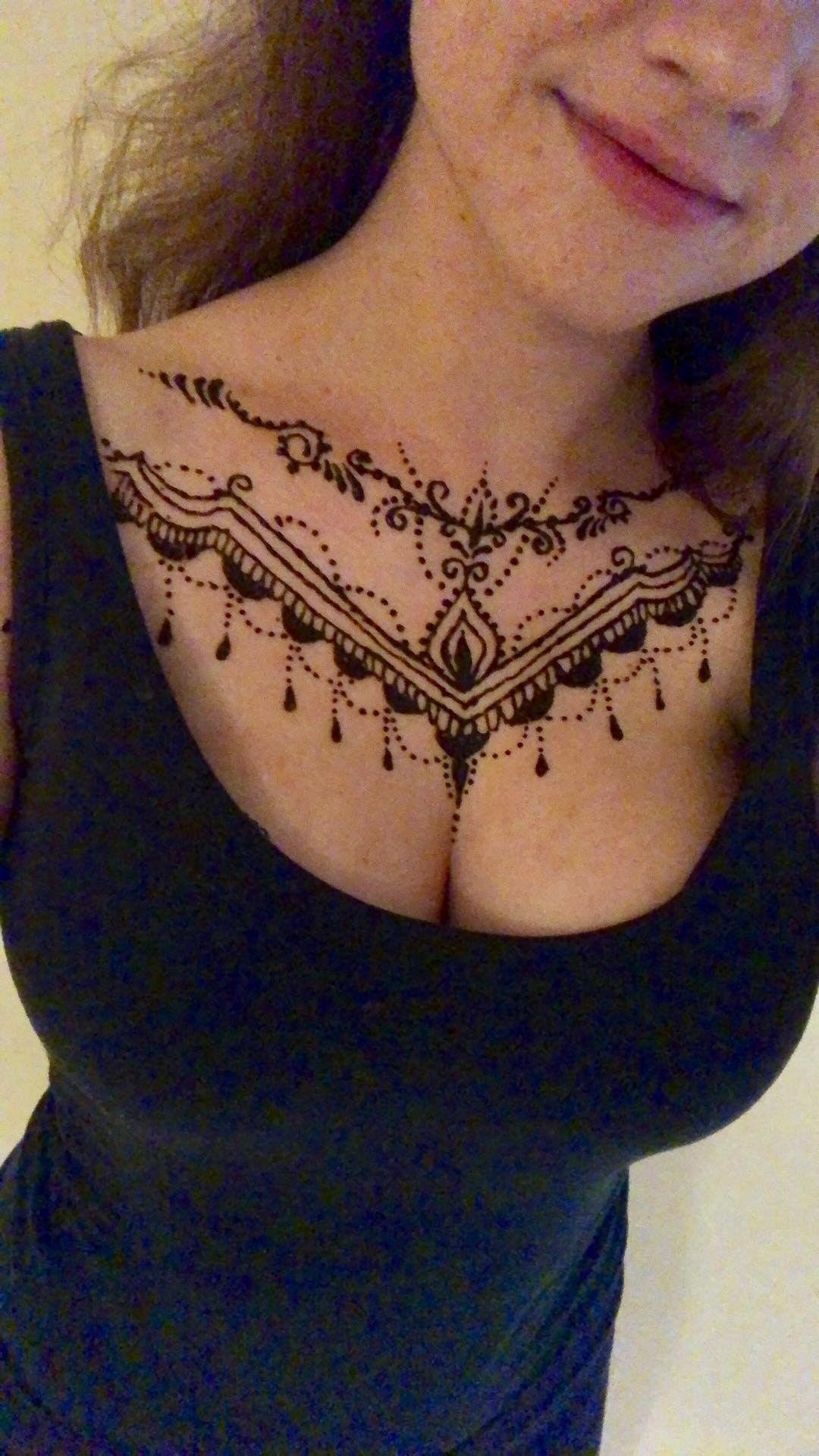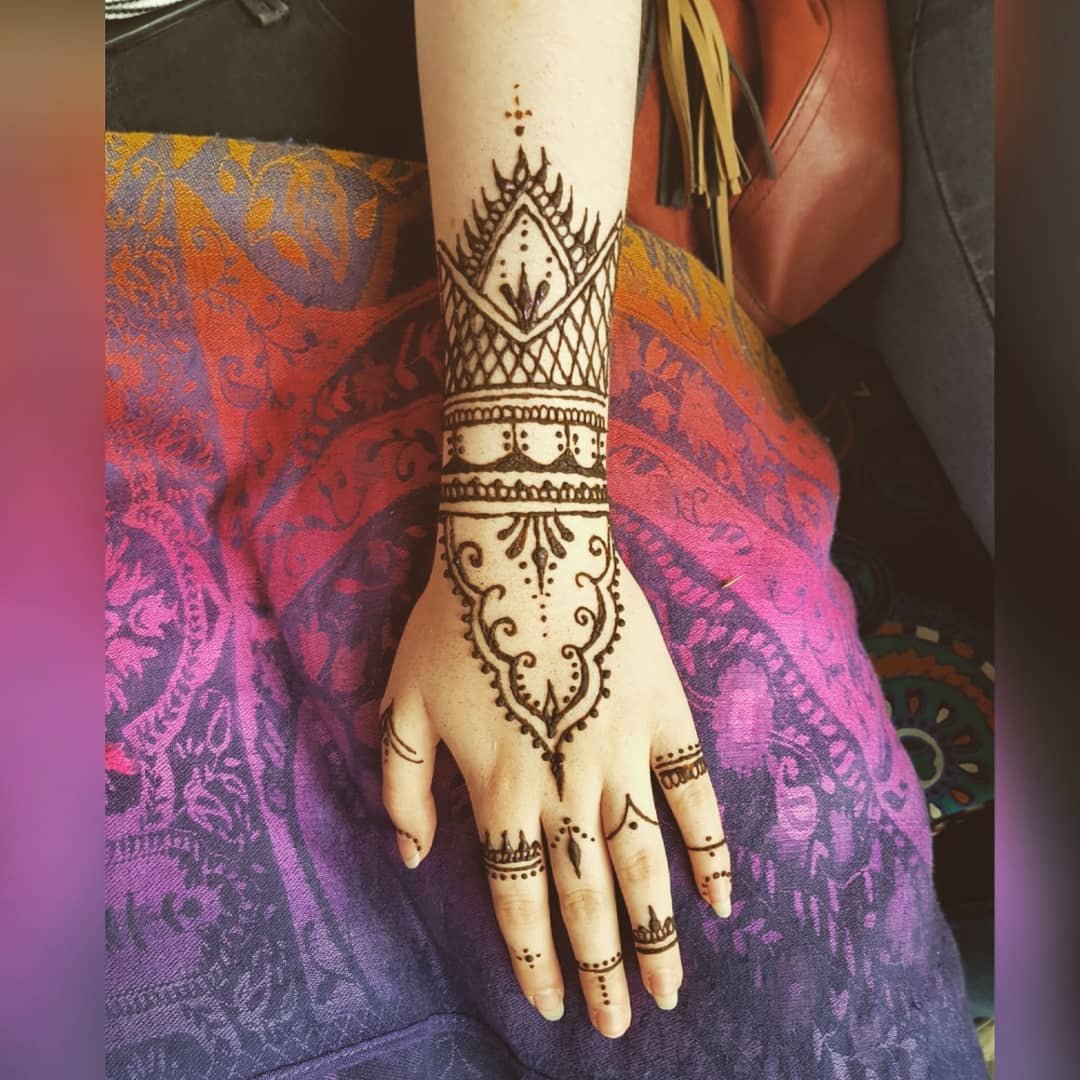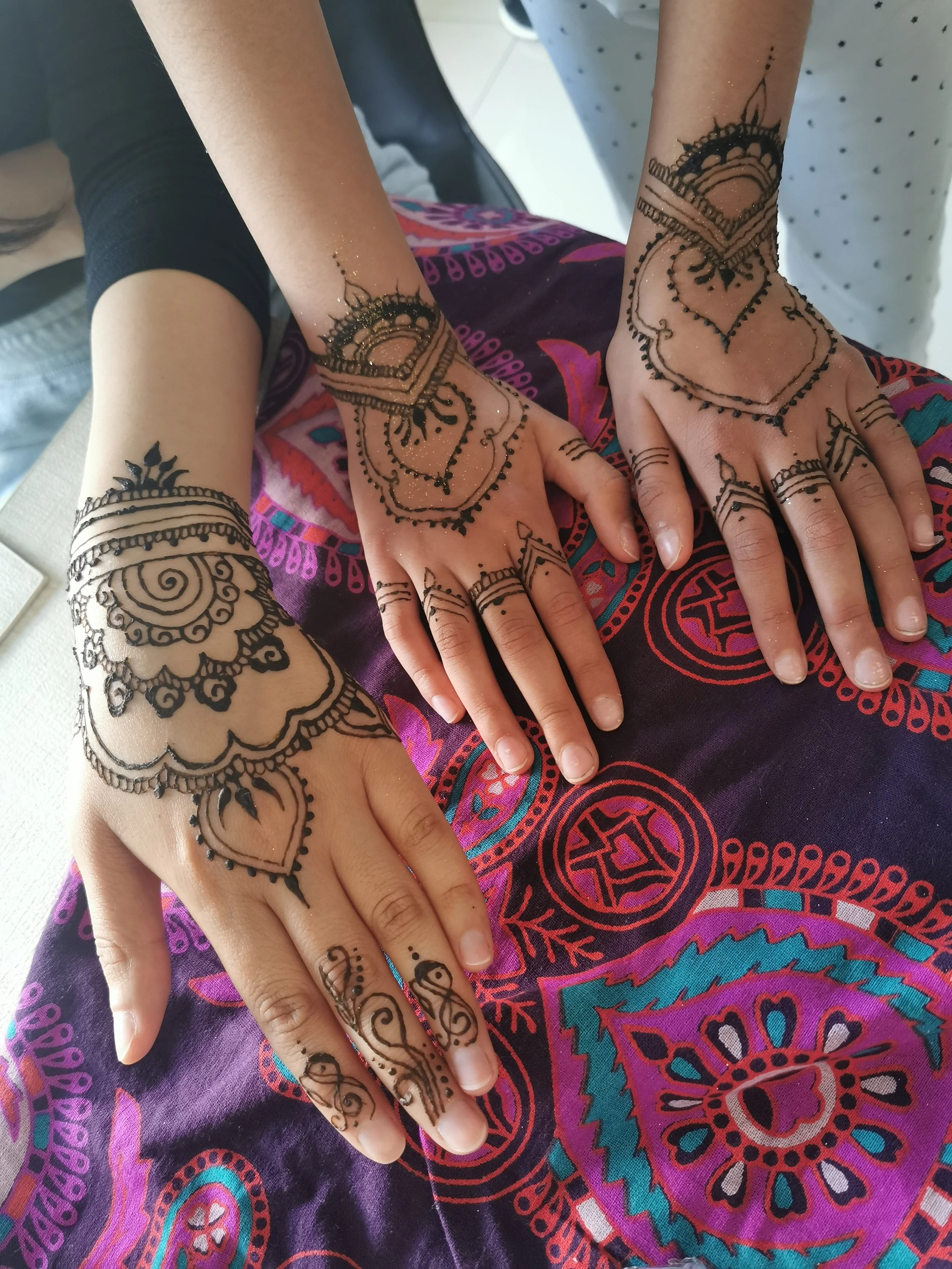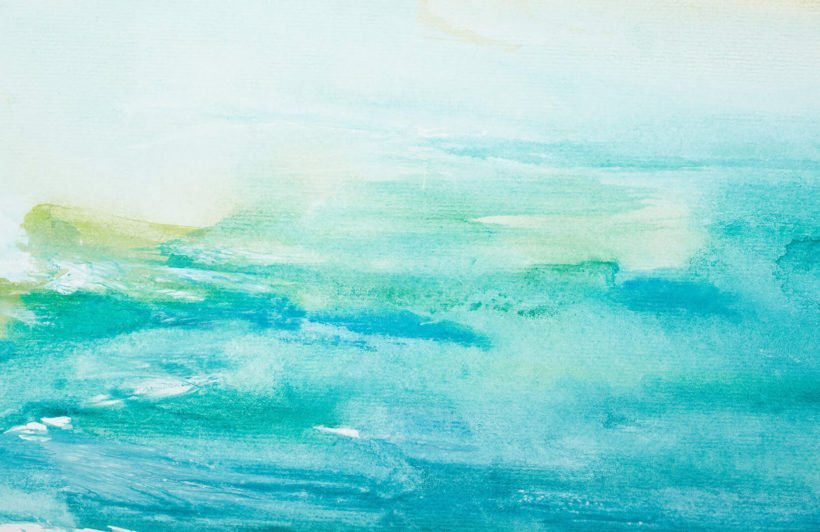
Henna
Origins of Henna
The art of henna body art has been practiced in India, Africa, and the Middle East for thousands of years. The exact origin of the ancient art isn’t clear—while some argue the first people to use henna to dye their skin were ancient Egyptians, others claim India was the place of origin (where it’s known as Mehndi in Hindi and Urdu). It is thought to have evolved from desert communities who discovered that they could cool themselves down by applying paste made from henna plants to their hands and feet. It wasn’t long until they started applying it in various decorative patterns, and as the designs became more intricate, so did the tradition.
Eventually both men and women in Hindu and Muslim cultures began to adorn themselves in henna art for special celebrations and religious holidays. Pre-wedding “Night of Henna” parties became popular, where Indian brides, along with their female friends and family, would gather to be adorned in henna patterns as a symbol of luck and blessings. Henna designs were also painted on pregnant women who, as tradition, would enjoy a few weeks off from housework duties in preparation for birth as well as to protect their body art. Today, some of the same traditions live on, and the beautiful designs vary depending on the culture.
About Henna
-
Henna is a dye prepared from the plant Lawsonia inermis, also known as the henna tree, the mignonette tree, and the Egyptian privet. It is a small flowering plant that grows in tropical climates such as Africa and Northern Asia. Its leaves contain a useful staining pigment called lawsome, in various hues from burnt orange, to deep red. To extract it, the leaves are dried and then crushed into a fine powder.
The henna powder is mixed with variations of esential oils, water, lemon juice and sugar to make a paste which is then applied to the skin in decorative patterns and designs.
-
Henna is applied to the skin as a paste, and once cleaned away, the reddish-orange stain begins to oxidize and darken over the next few days. Although not permanent, the body art can last up to one or two weeks on the surface of the skin, making it a pain-free alternative to traditional tattooing.
-
Henna paste is piped onto the skin in decorative patterns and designs.
The paste quickly dries and hardens on the skin leaving a layer in the shape of the finished design.
This layer should typically be left on the skin for 4 to 8 hours. I like to leave mine on as long as possible and sometimes go to sleep with the henna on and remove the next morning.
The longer you leave the layer of dried henna on the skin the longer the henna will last and the darker the stain will be. Removing the layer shortly after application will mean that the stain will not be as dark or last as long.
The hardened henna layer should then be flaked off or removed with coconut oil. Do not wash it off with water. You will be left with a bright orange stain.
The stain will oxidize and darken within 24-48 hours. Be patient and trust the process and you’ll be rewarded with a beautiful rich henna stain.
You should not wash your henna. Water interferes with the oxidization of the stain and will mean you won’t get as dark a stain as possible.
-
The henna stain will last anywhere between a few days to a few weeks, depending on the area where you are applying, the aftercare taken and the number of times you expose the area to water.
The color then fades away gradually. For example:
Applied on the back of the hands or tops of the feet, the color will last nearly 2 weeks but will fade away if you wash your hands a lot.
Applied on the shoulder, chest, back, buttock, stomach, and upper arm, the stain will last for 7-10 days.
Applied on thighs, lower legs, and lower arms, the stains will last 10 days to 2 weeks.
Some tips and aftercare to make the stain last as long as possible:
Have all skin freshly cleaned and don't have any moisturisers, oils or fake tan on before your henna appointment.
Henna must not get wet for the first 24 hours if it is to go dark and last for the two weeks, so please don't wash the paste off.
Coat the henna with oil before washing, hands, shower or swimming. Otherwise the stain will fade faster.
-
Henna which should be made from natural ingredients is safe but chemical henna available online has the potential to be very harmful. Chemical henna has been doing the rounds for years because it is cheaper than natural henna, but it is extremely dangerous. It can cause allergic reactions, chemical burns and scars. Henna is NEVER black, henna is only a brown colour so if you are ever offered black or red henna, it's not real, it's the chemical stuff.
Always ask the henna artist how they make their henna. If the person can't answer, it's a massive red flag and their product shouldn't be used. Any natural henna artist will know exactly what goes into their paste.
The henna paste I use, I mix myself. All the ingredients I use in my paste are 100% natural. I use a combination of sugar, lavender/cajeput essential oils, lemon juice or water, and henna powder.
Henna is also perfectly safe for pregnant women as long as lavender oil is the essential oil used in the mix.
Henna Services
-

Hand/Arm Henna
-

Body Henna
-

Festival/Event Henna
-

Henna Party
-

Kids Party Henna
-

Hen Party Henna
Why get into henna?
When I was younger I spent some time in Dubai with relatives. Whilst there my aunt brought me and my sisters to get a henna mehndi done. I got a beautiful Arabic floral design all up along my arm and I was obsessed. For the time the henna stayed on my arm I was fascinated with the art of it and was sad when it eventually faded away. I went back to Dubai 2 years after and hounded my parents until I was able to get another beautifully intricate henna.
Years later I was in Spain on holiday and came across a beach stall offering henna. I jumped at the chance to get henna done again but it wasn’t the beautiful freehand body art I remembered. It was the chemical “black” henna that was stenciled on and washed off after a day or so. I was beyond disappointed and longed for the gorgeous henna I remembered.
After arriving home from my holiday I decided I would try my hand at henna myself as I knew of nowhere around locally that offered it. There continued my obsession with the beautiful art form and I have kept with it since. From practicing on my own hands, arms and legs, to doing henna for family and friends to now being able to offer it to my lovely clients.
